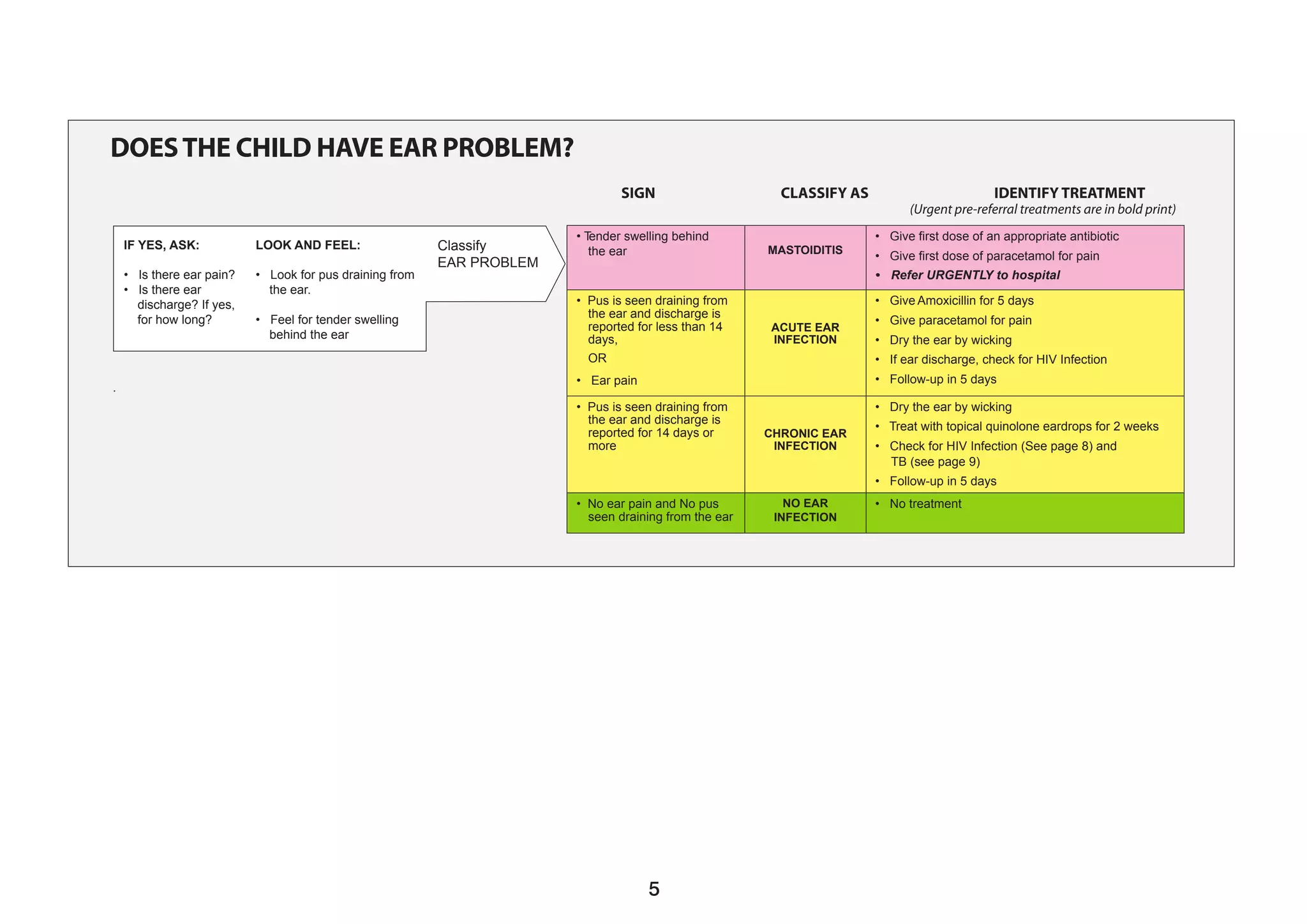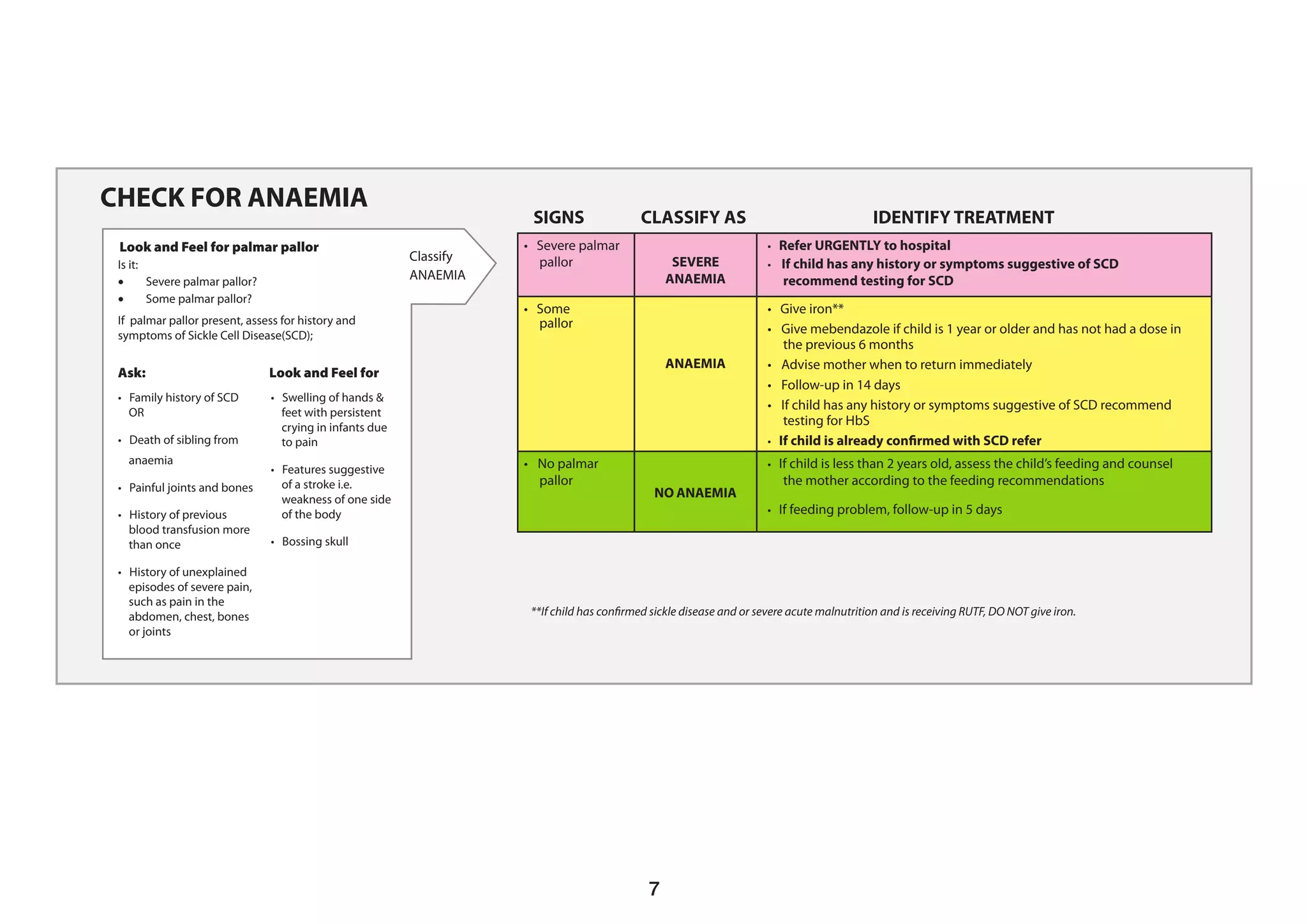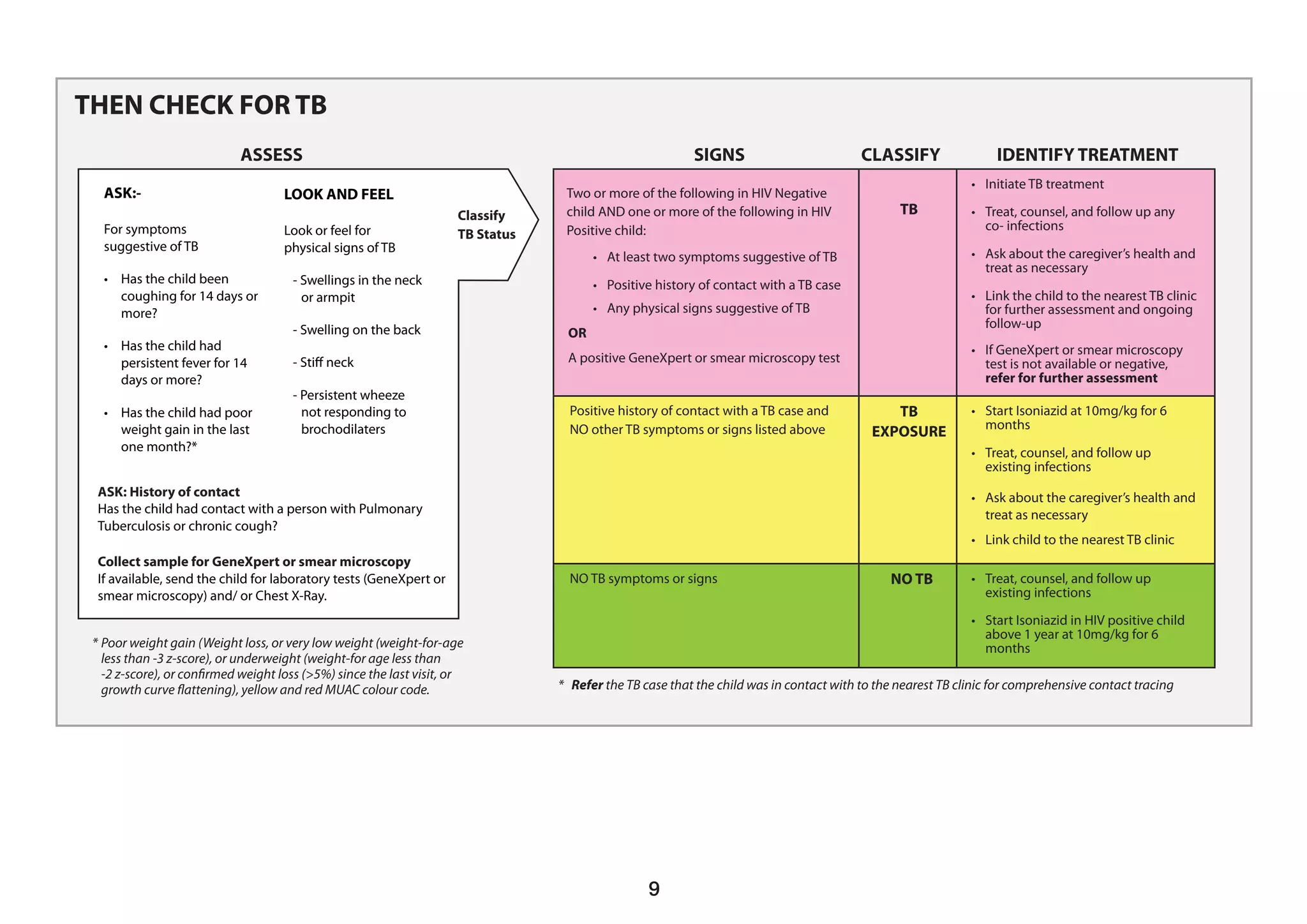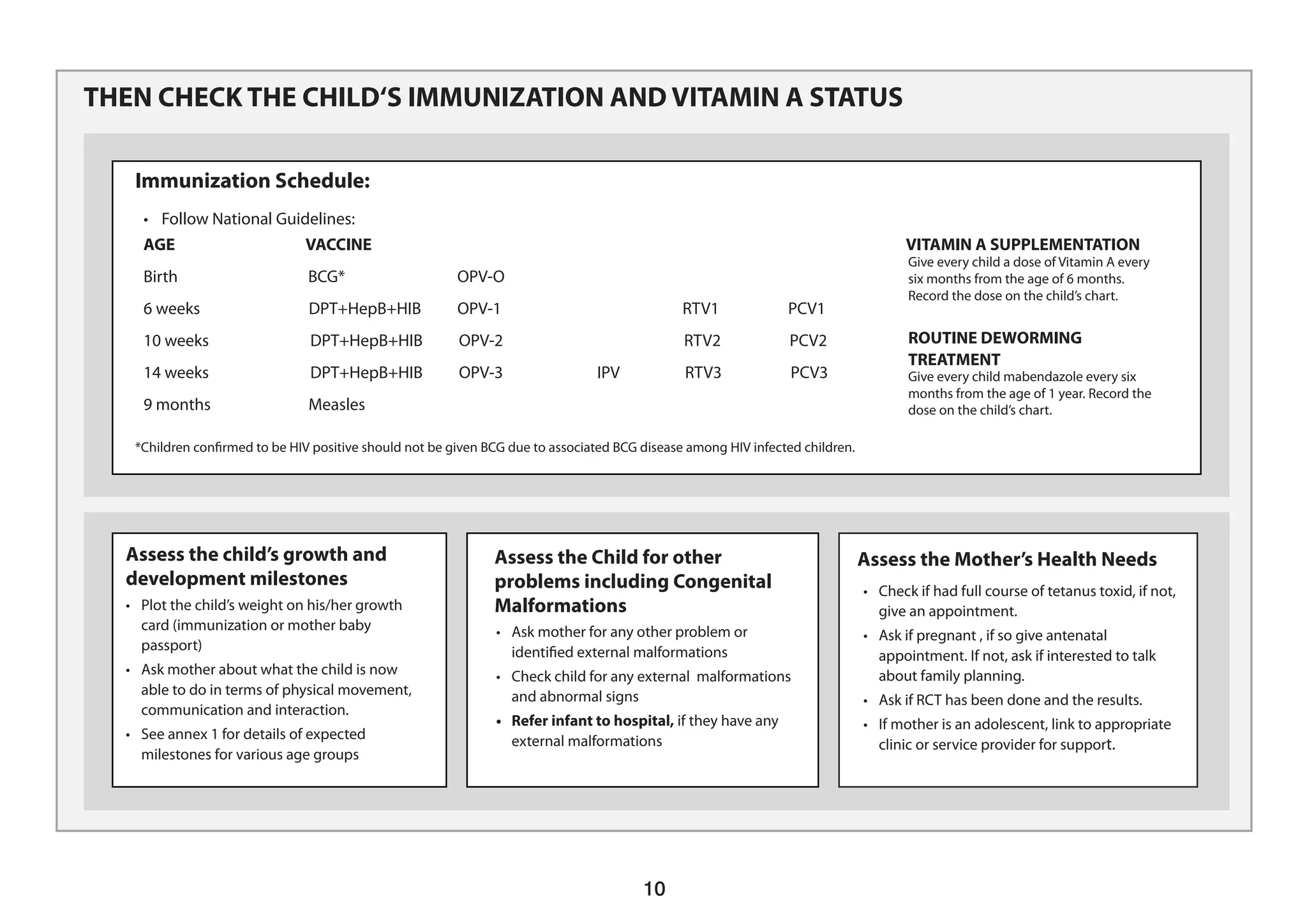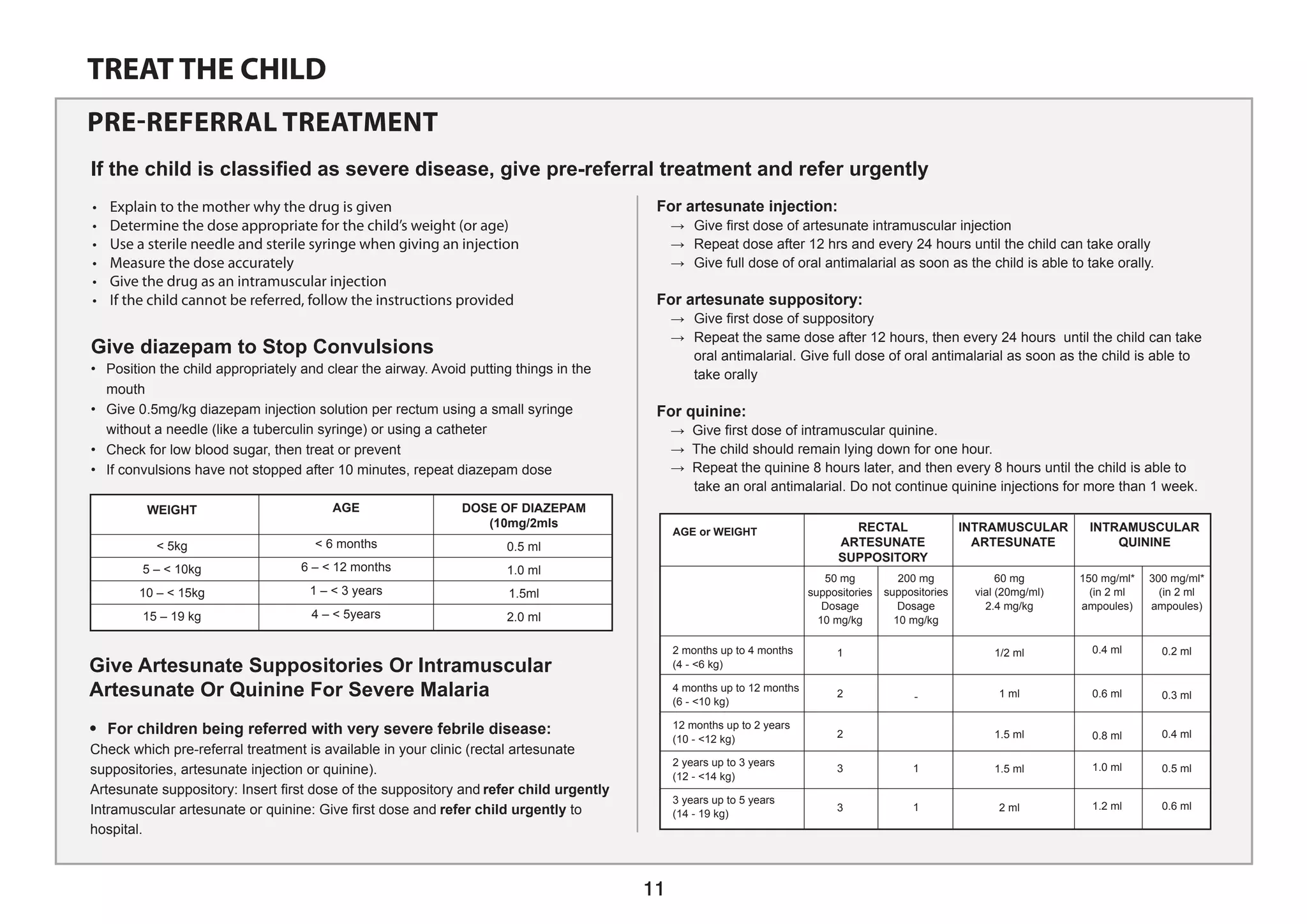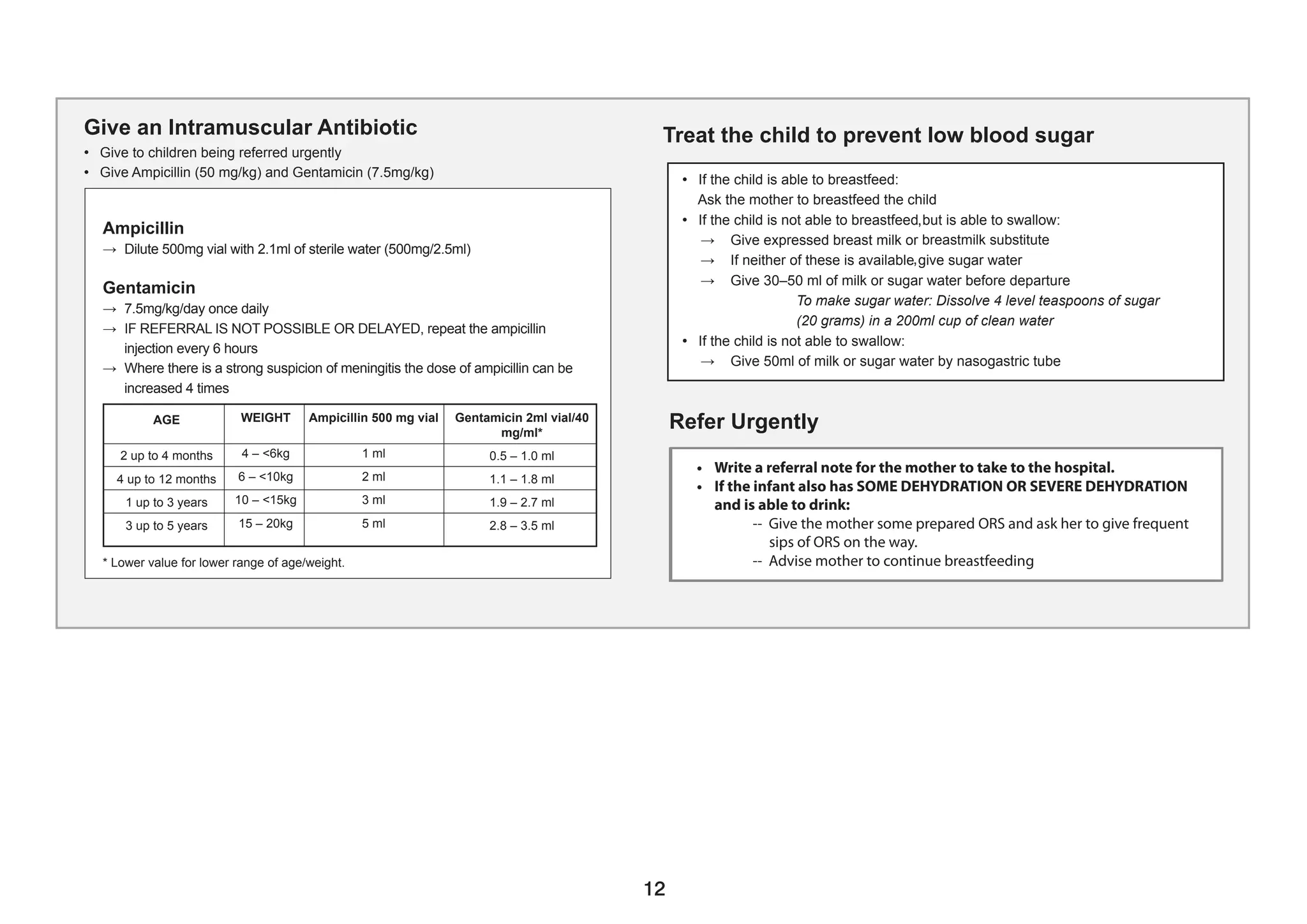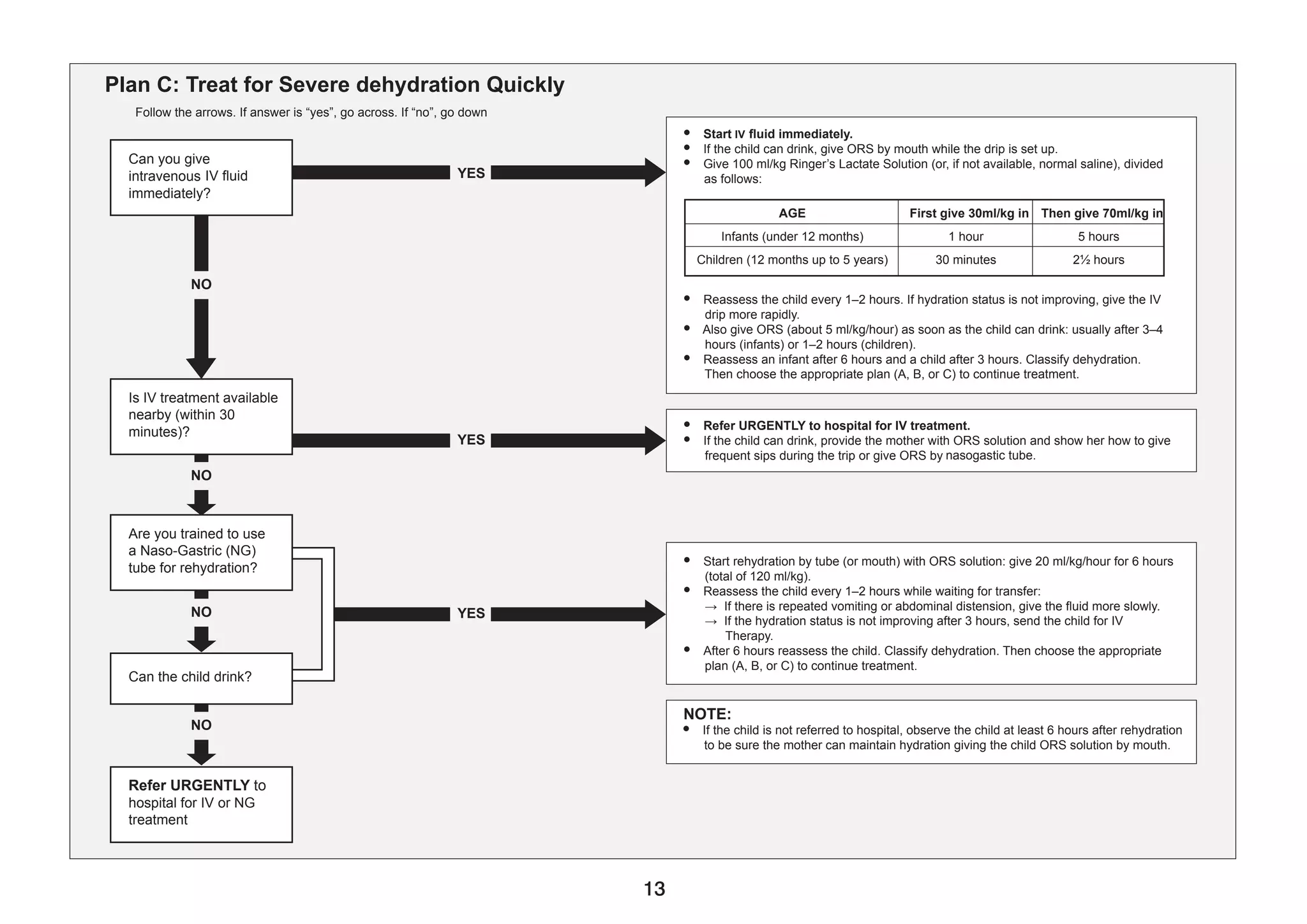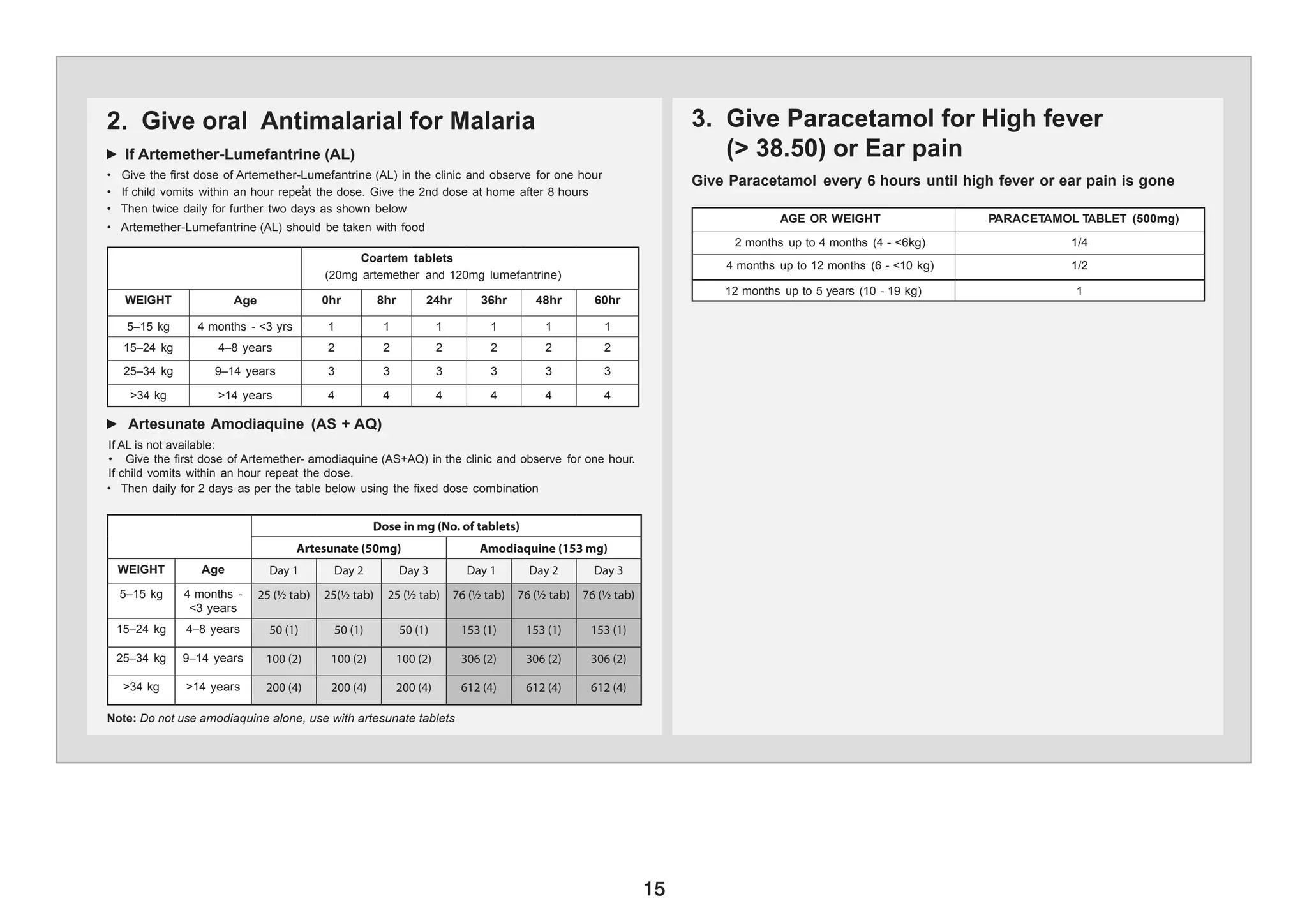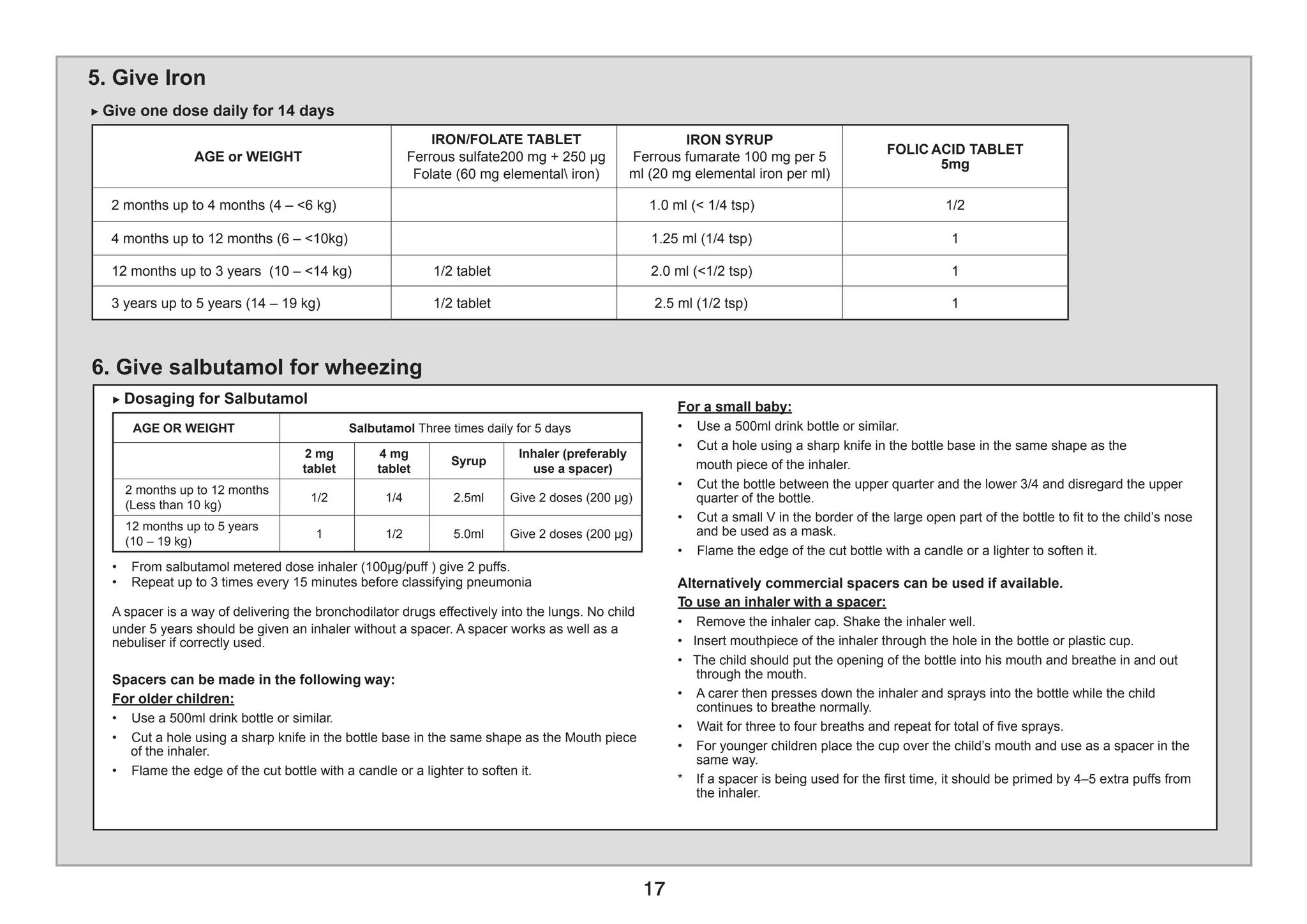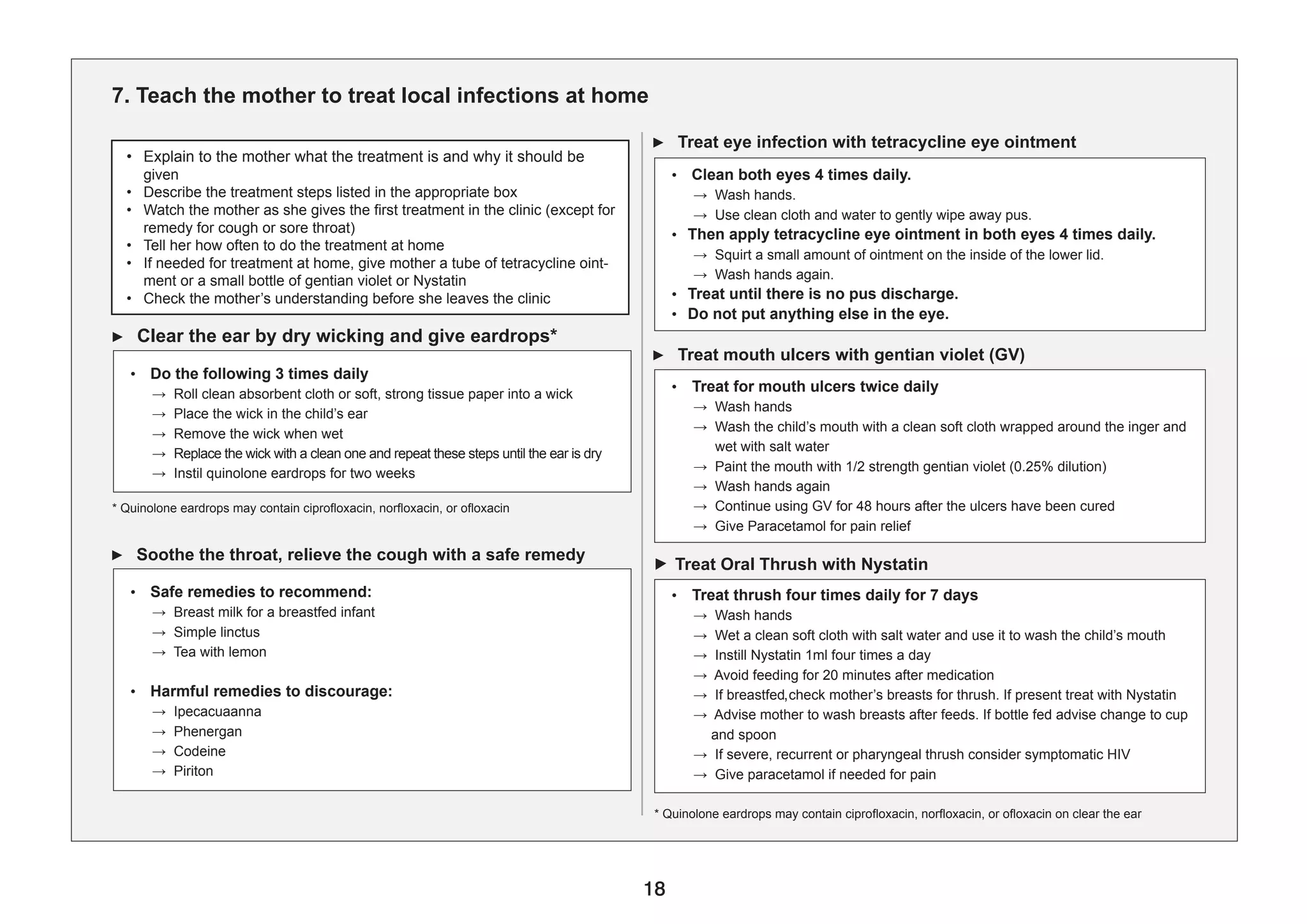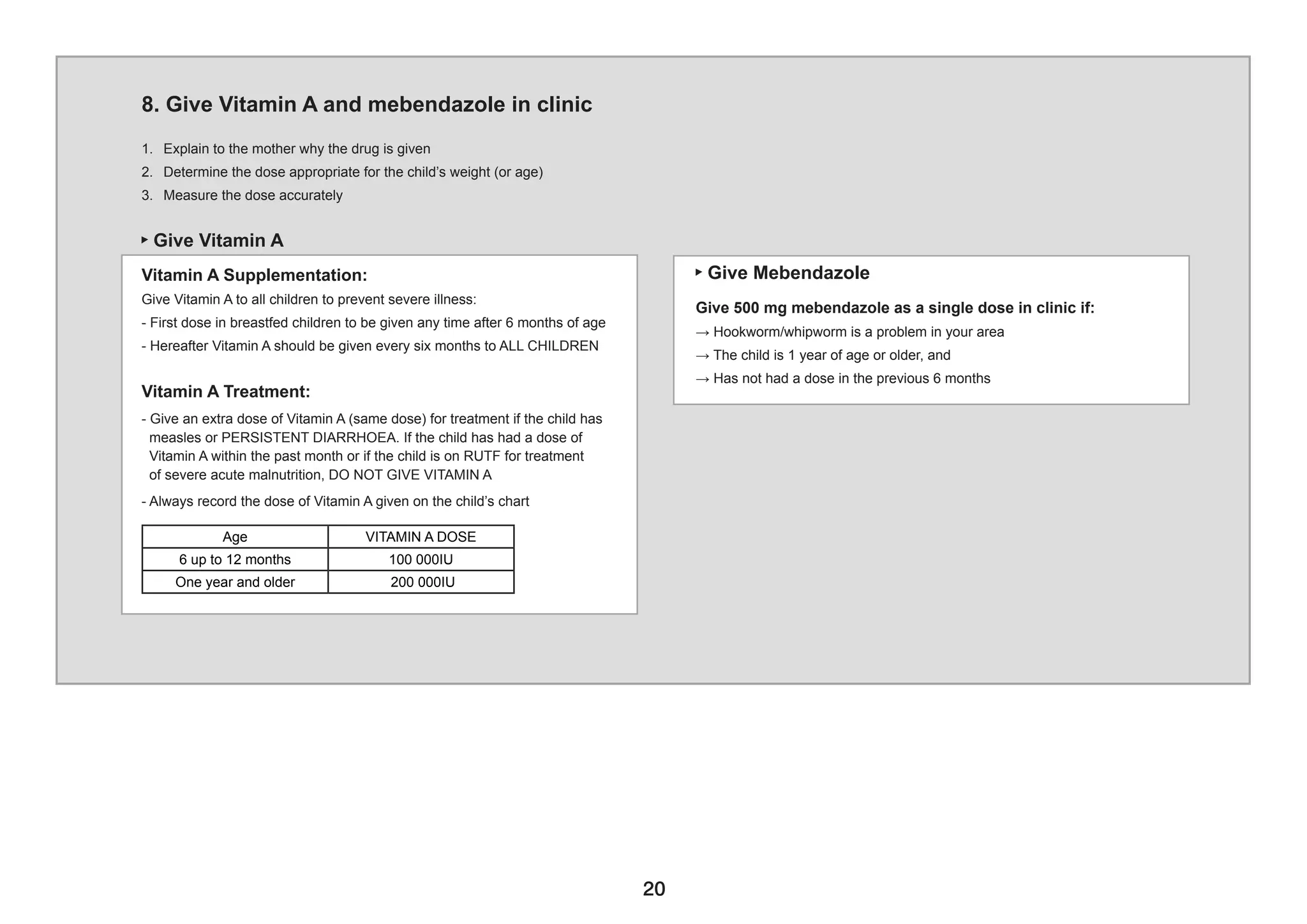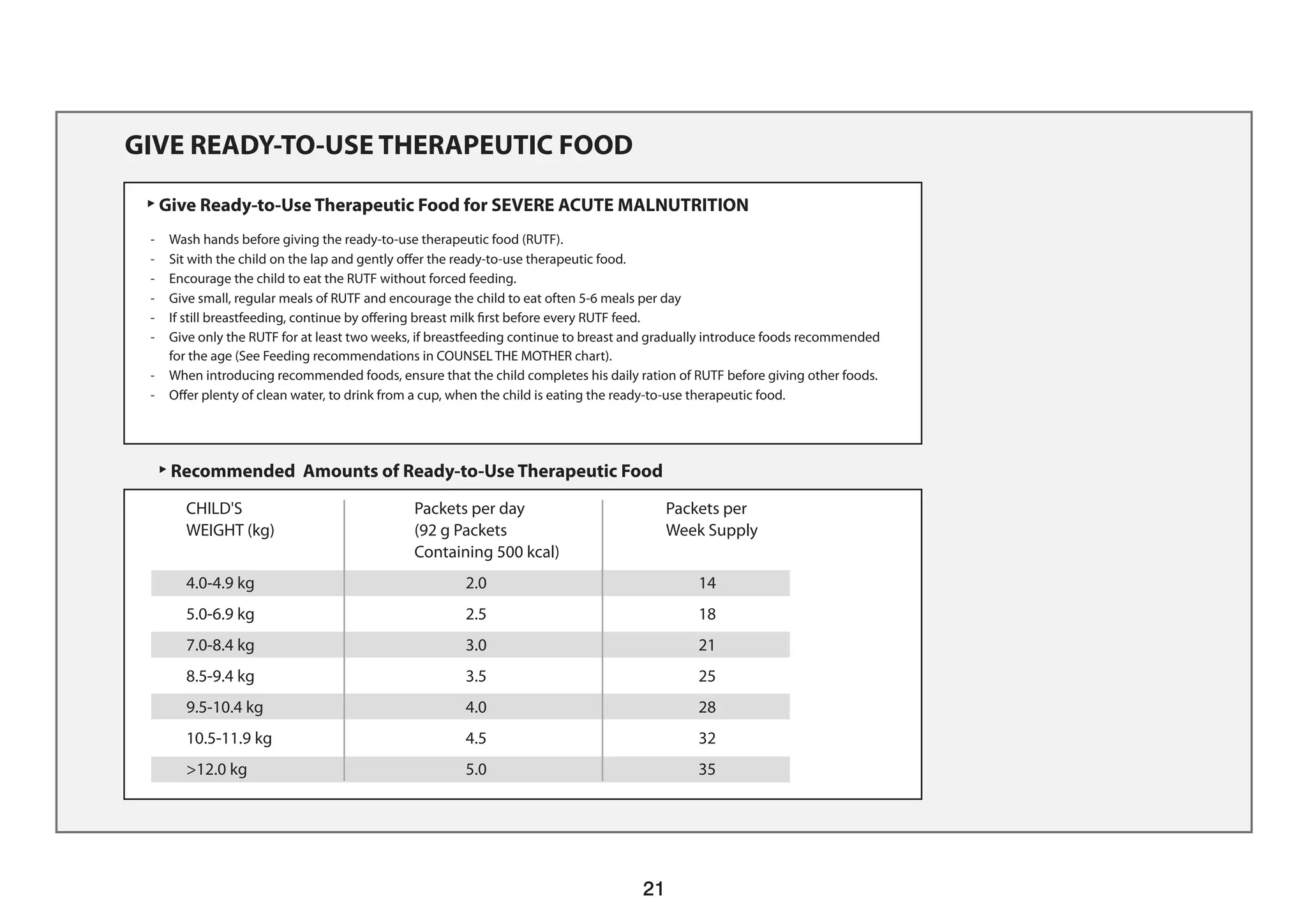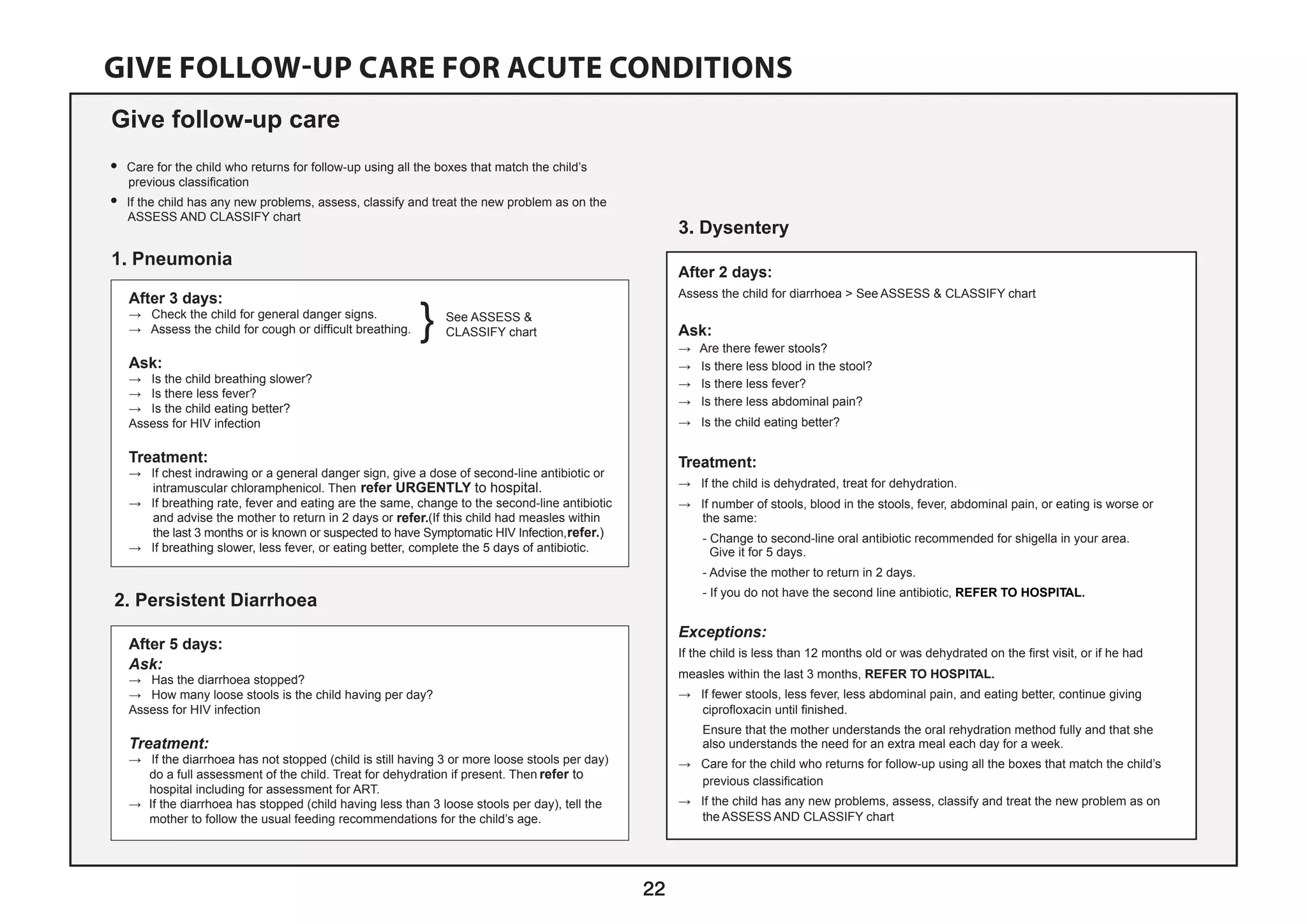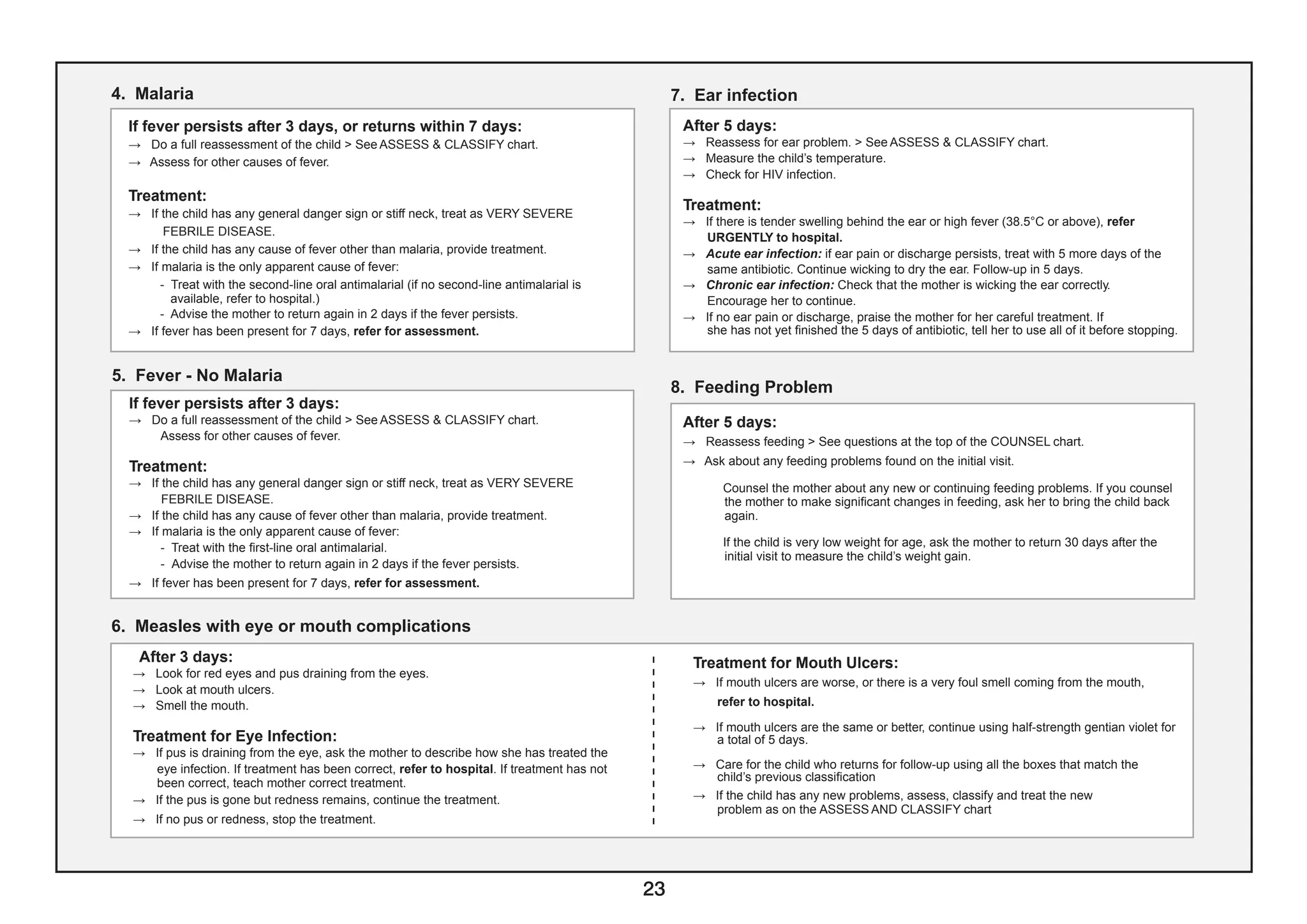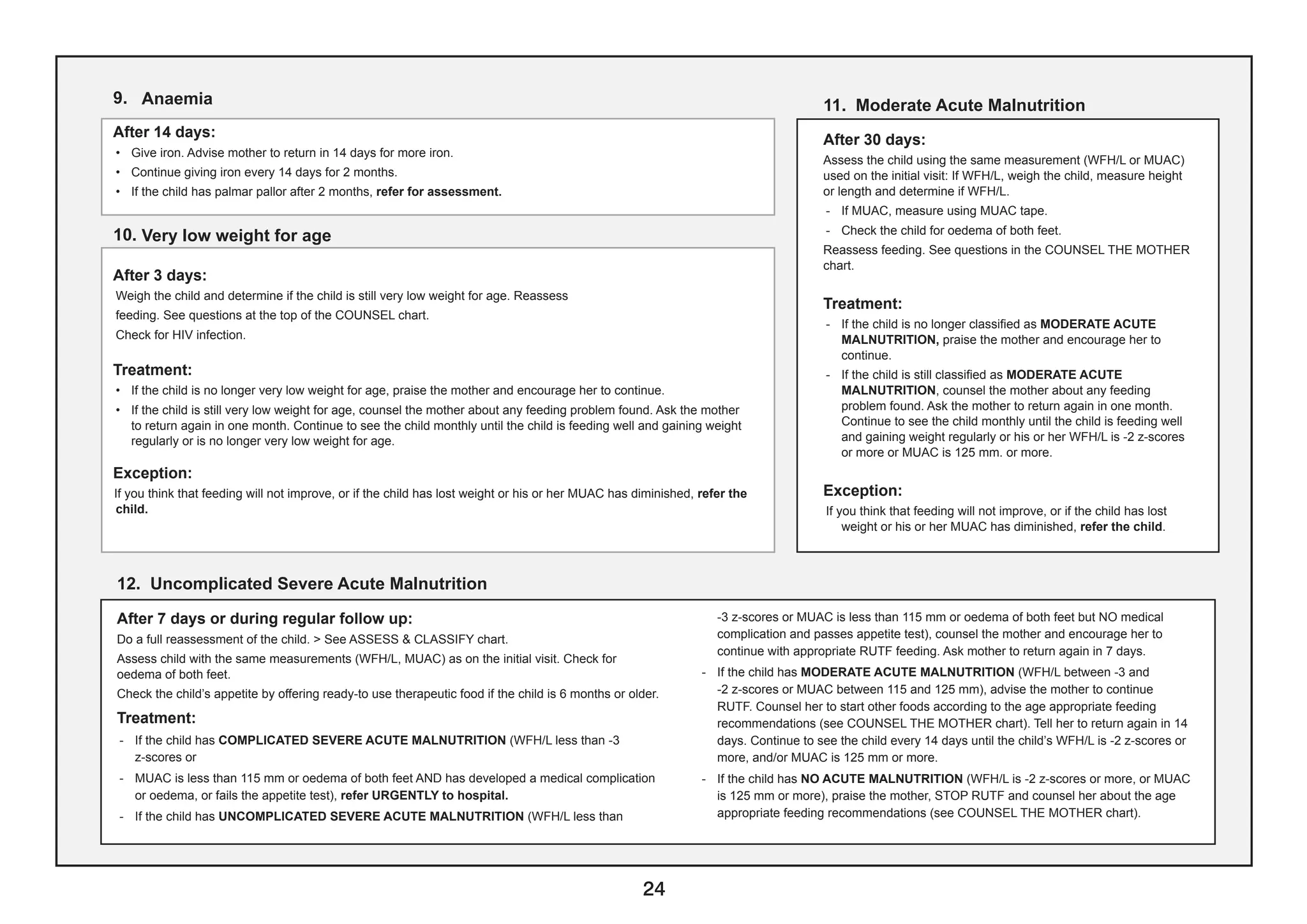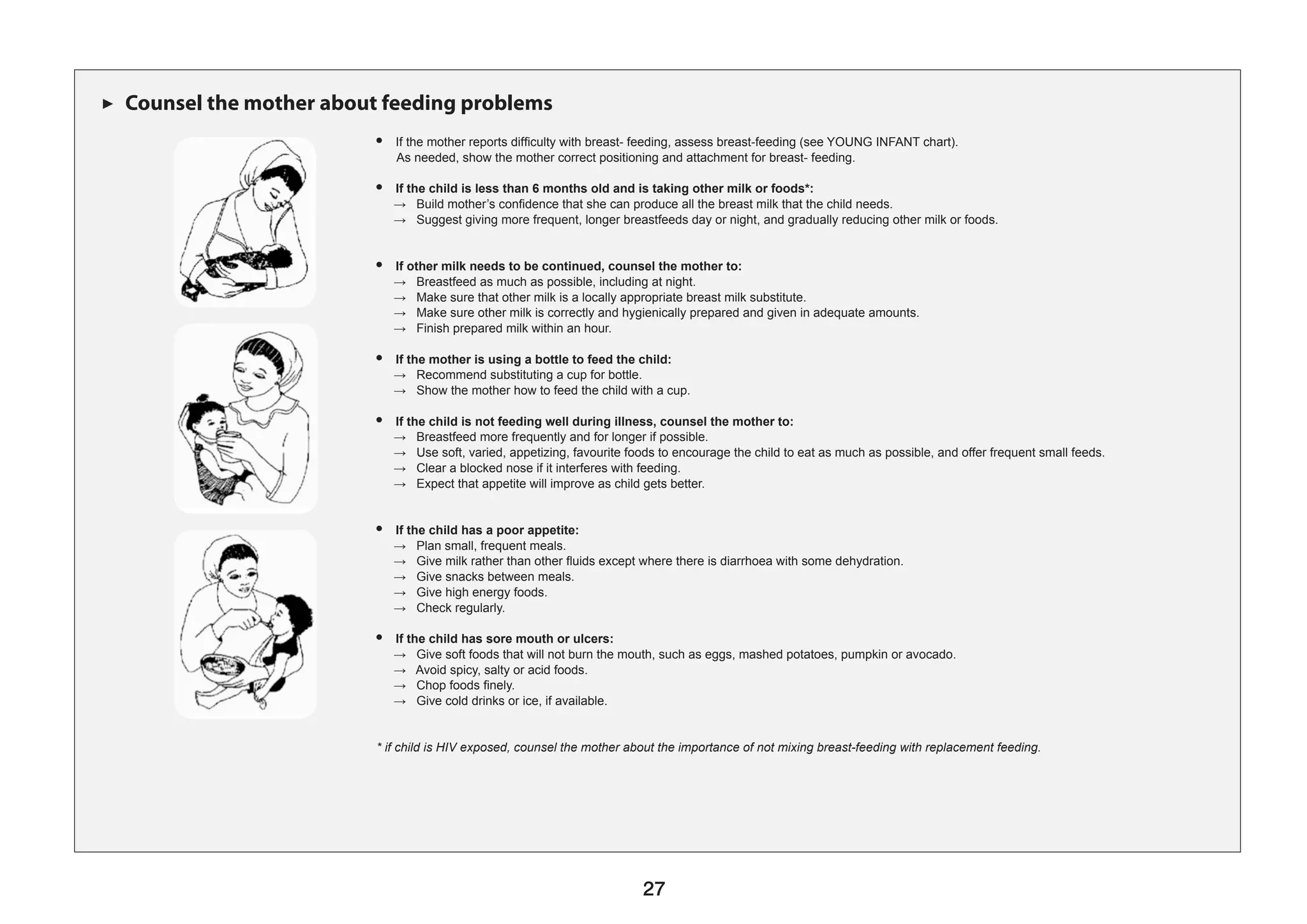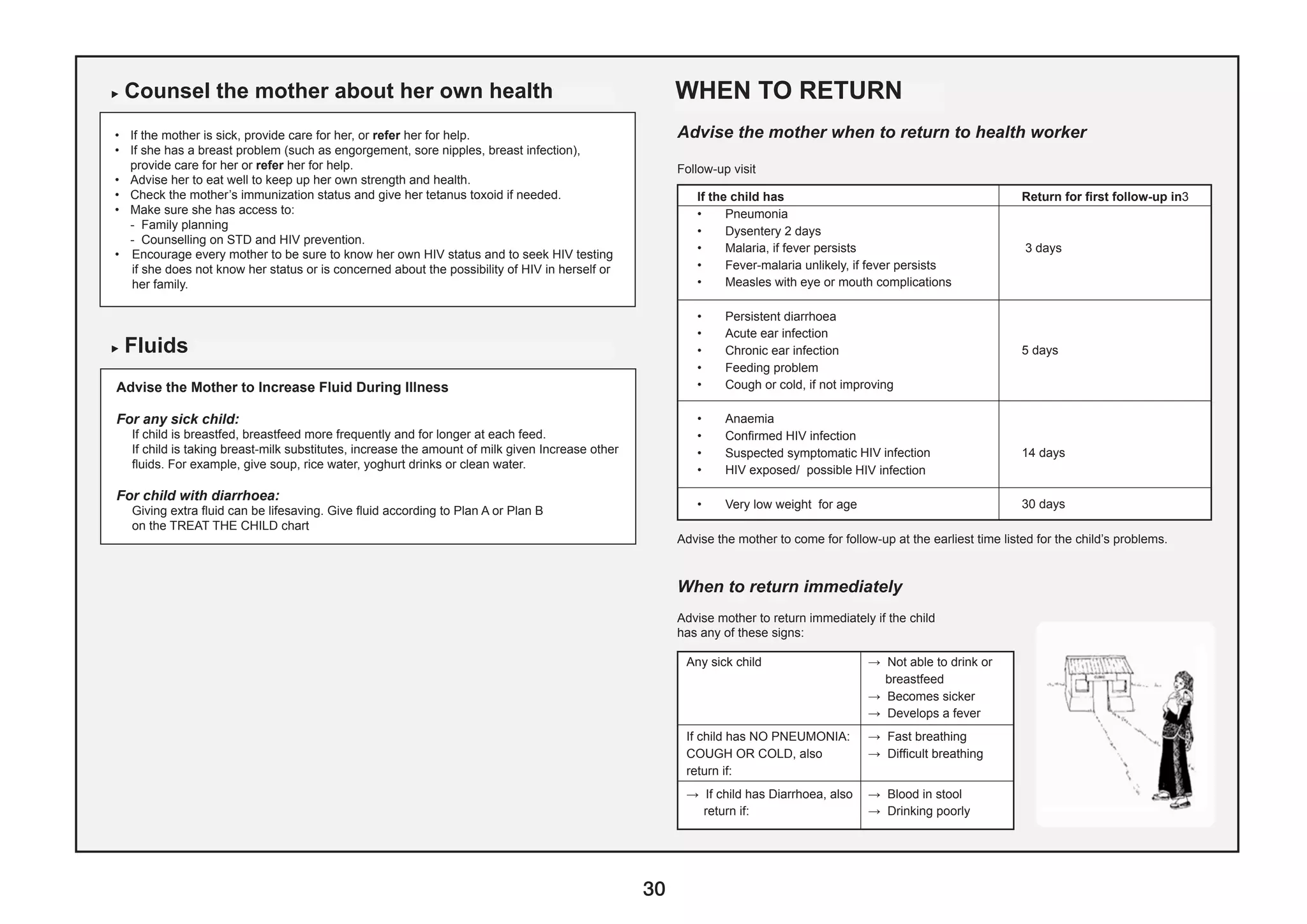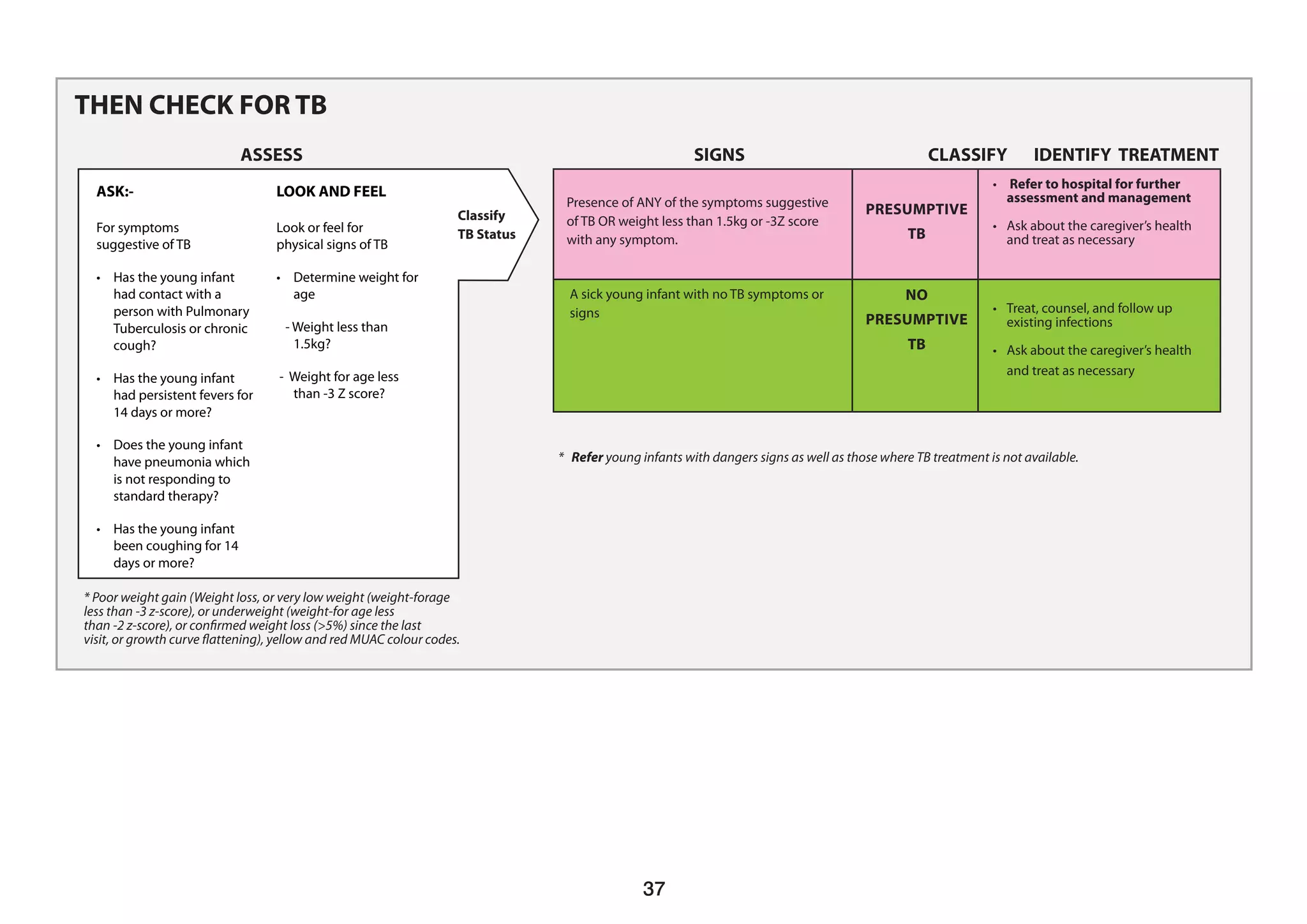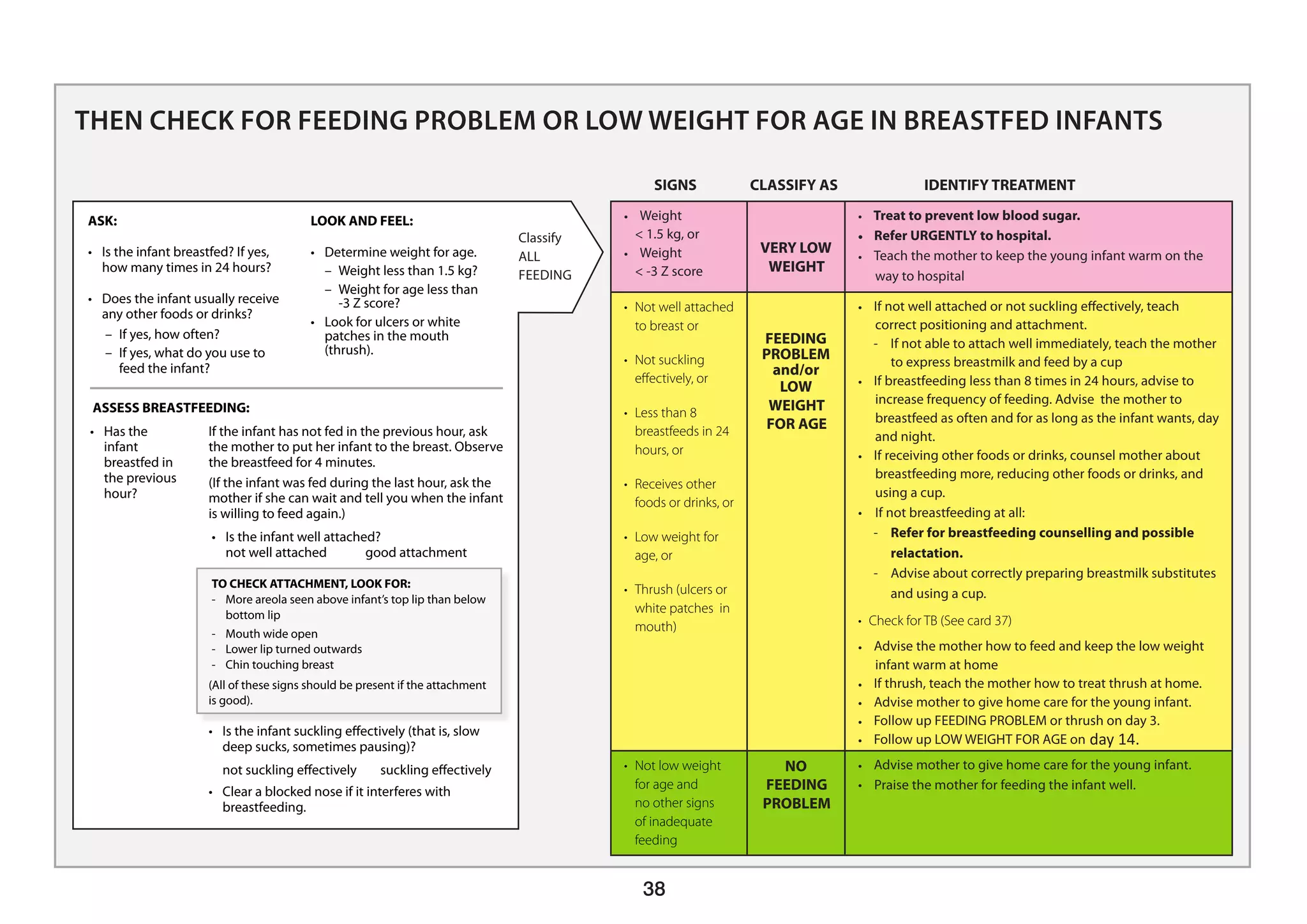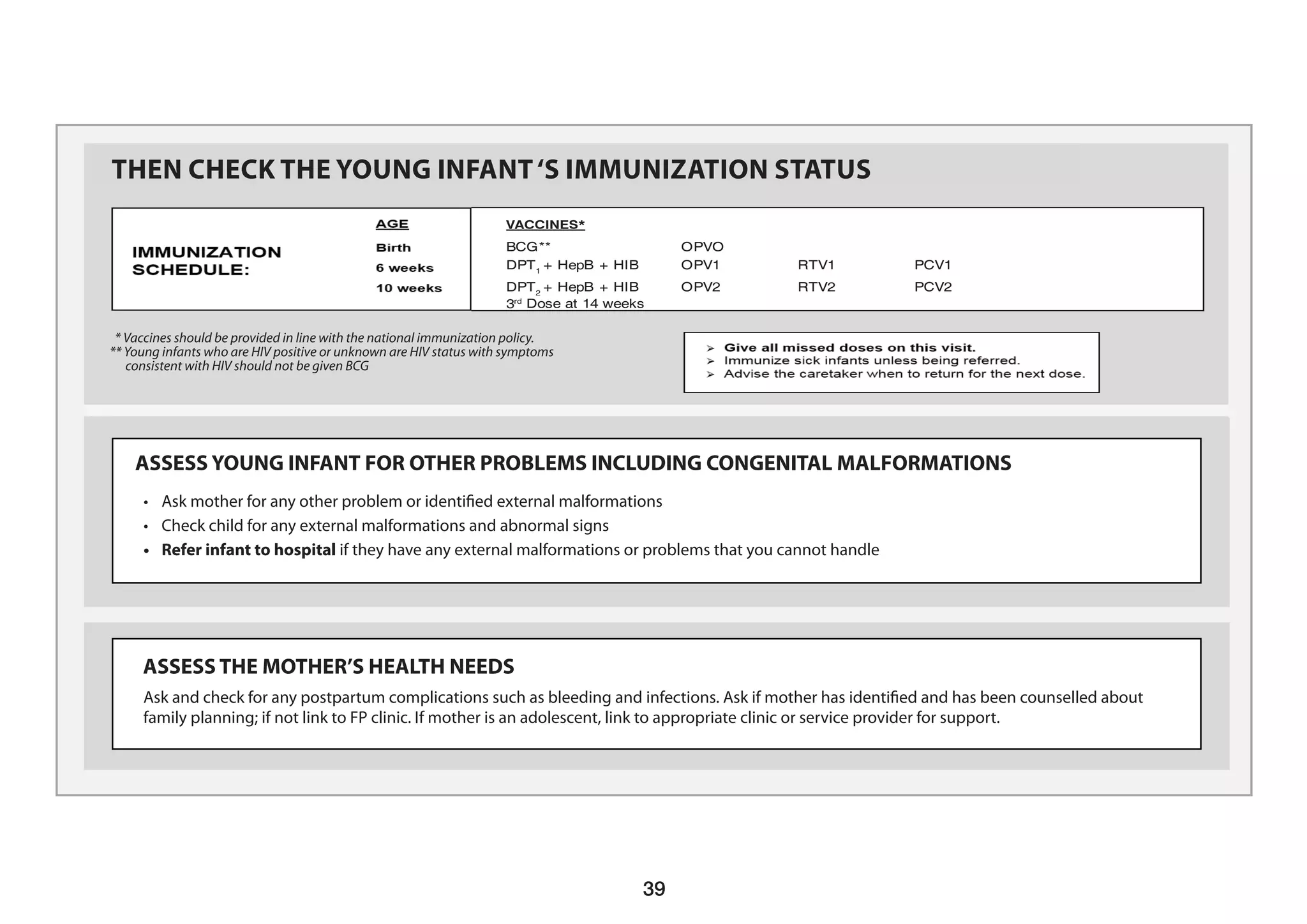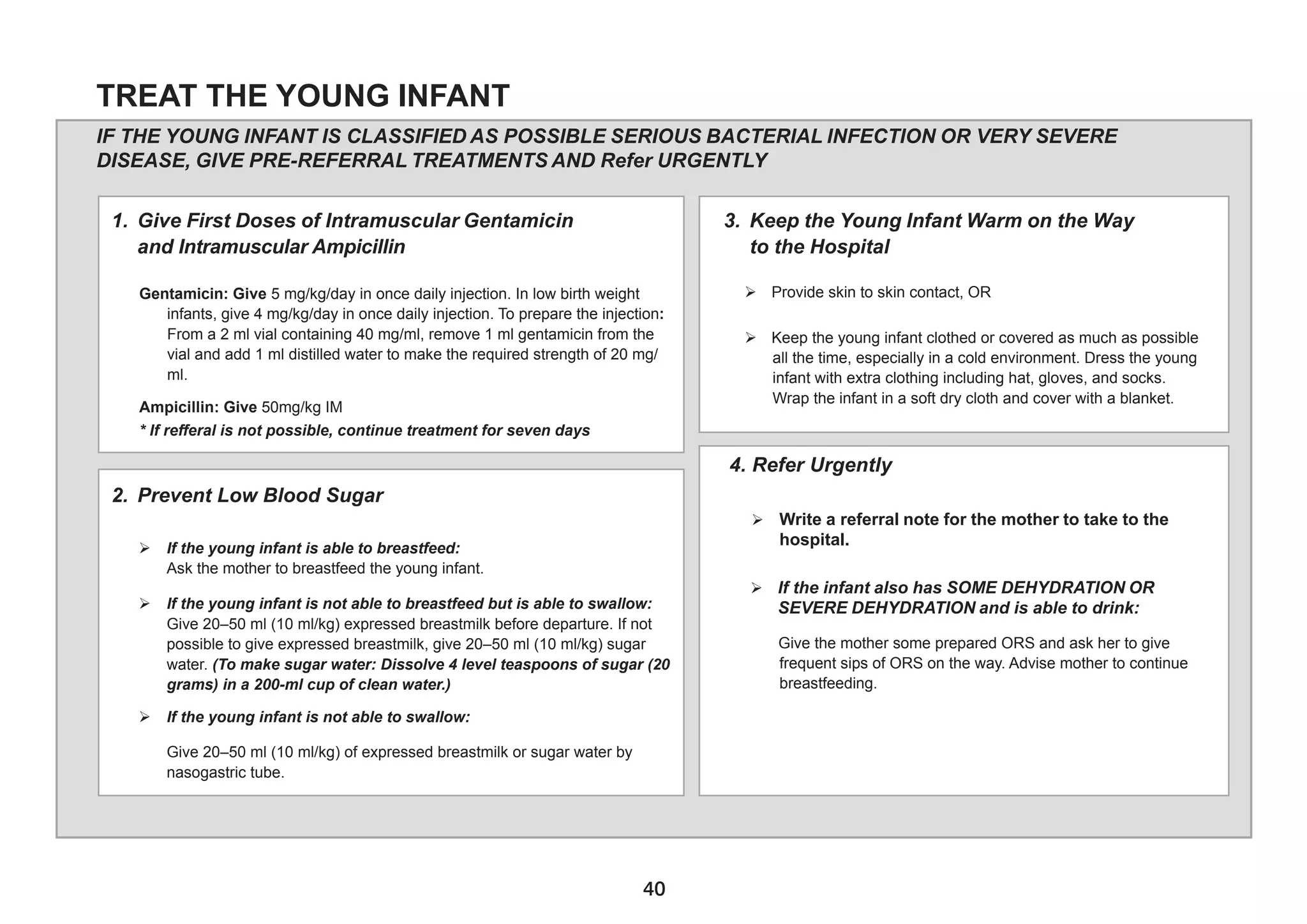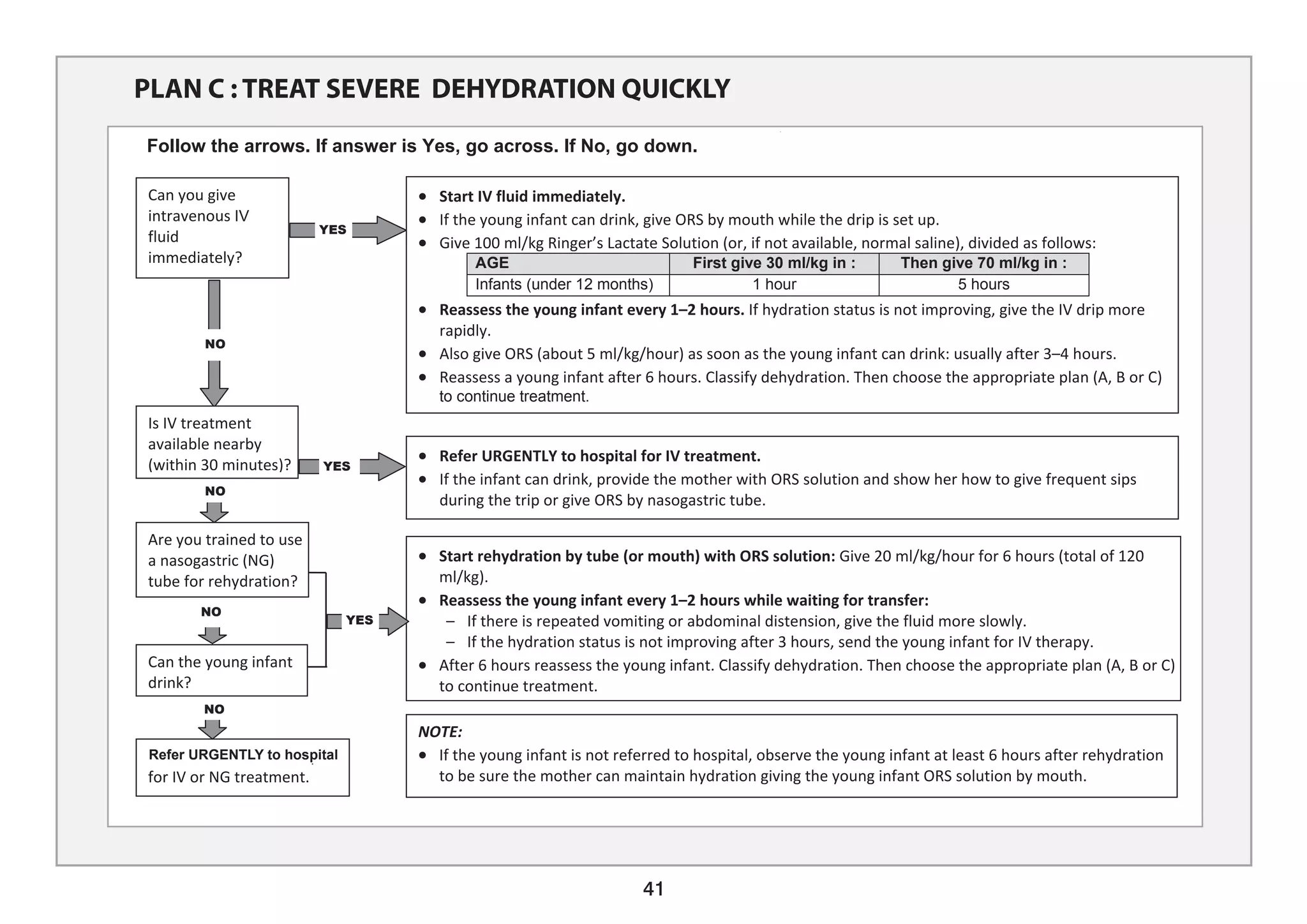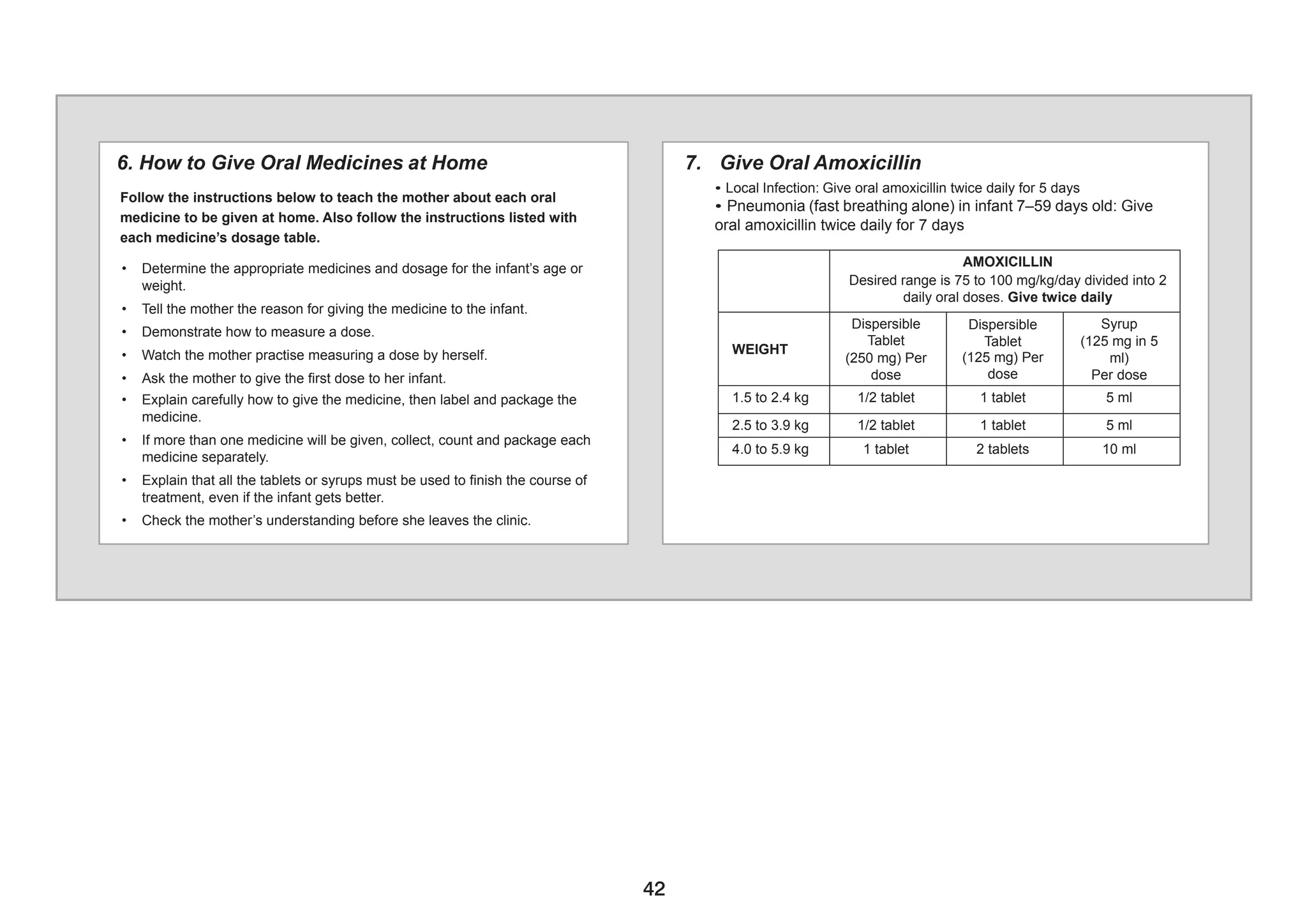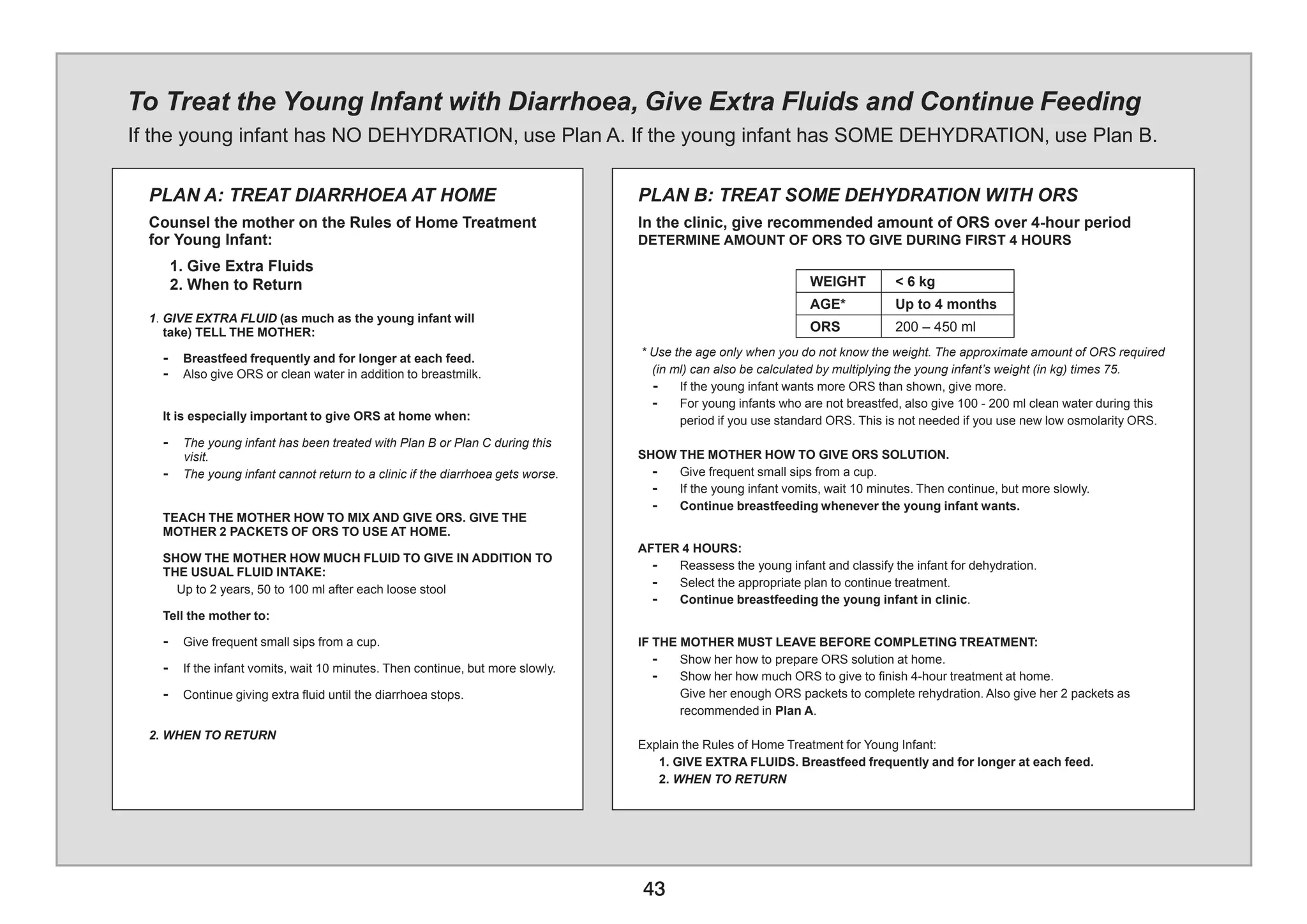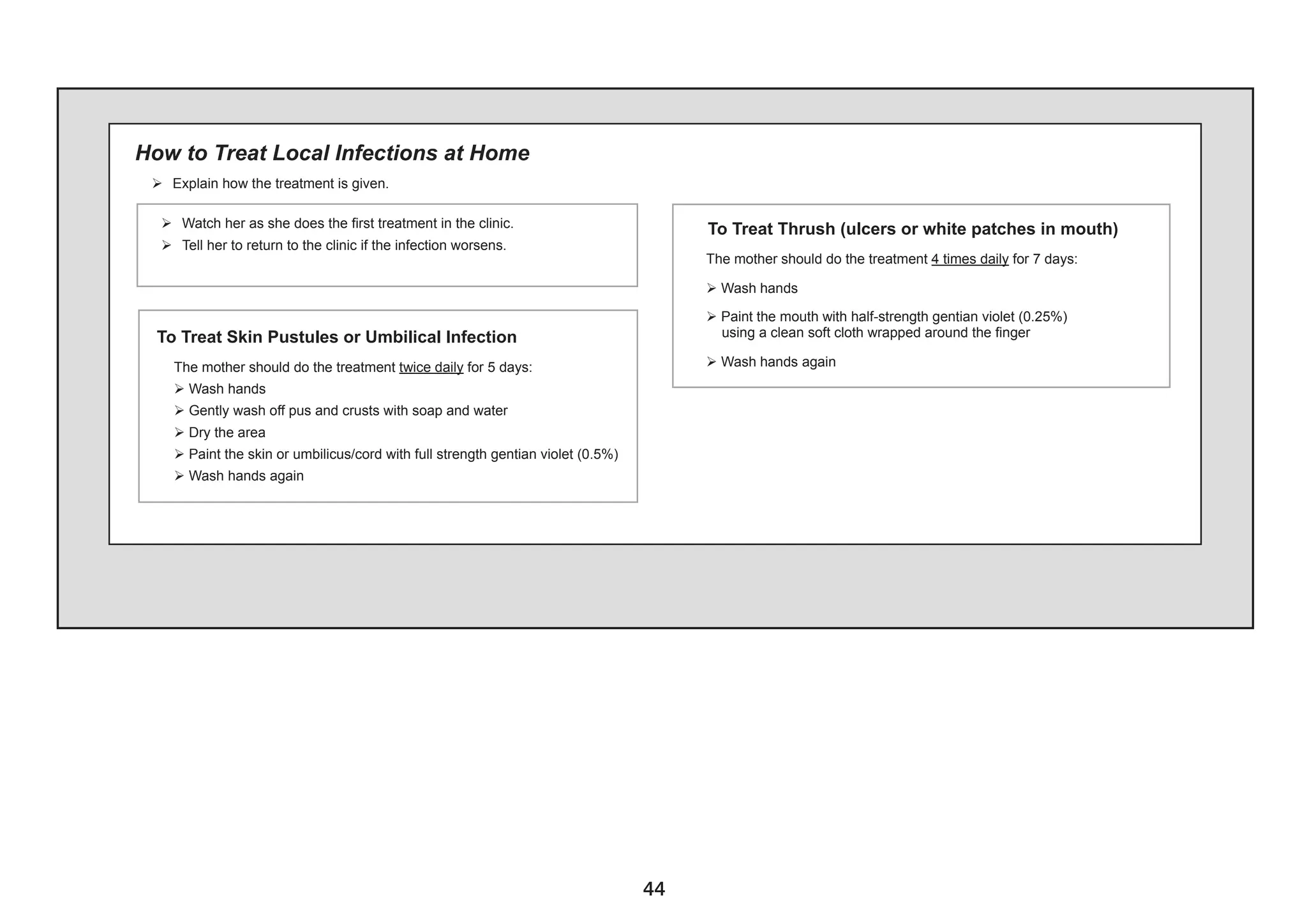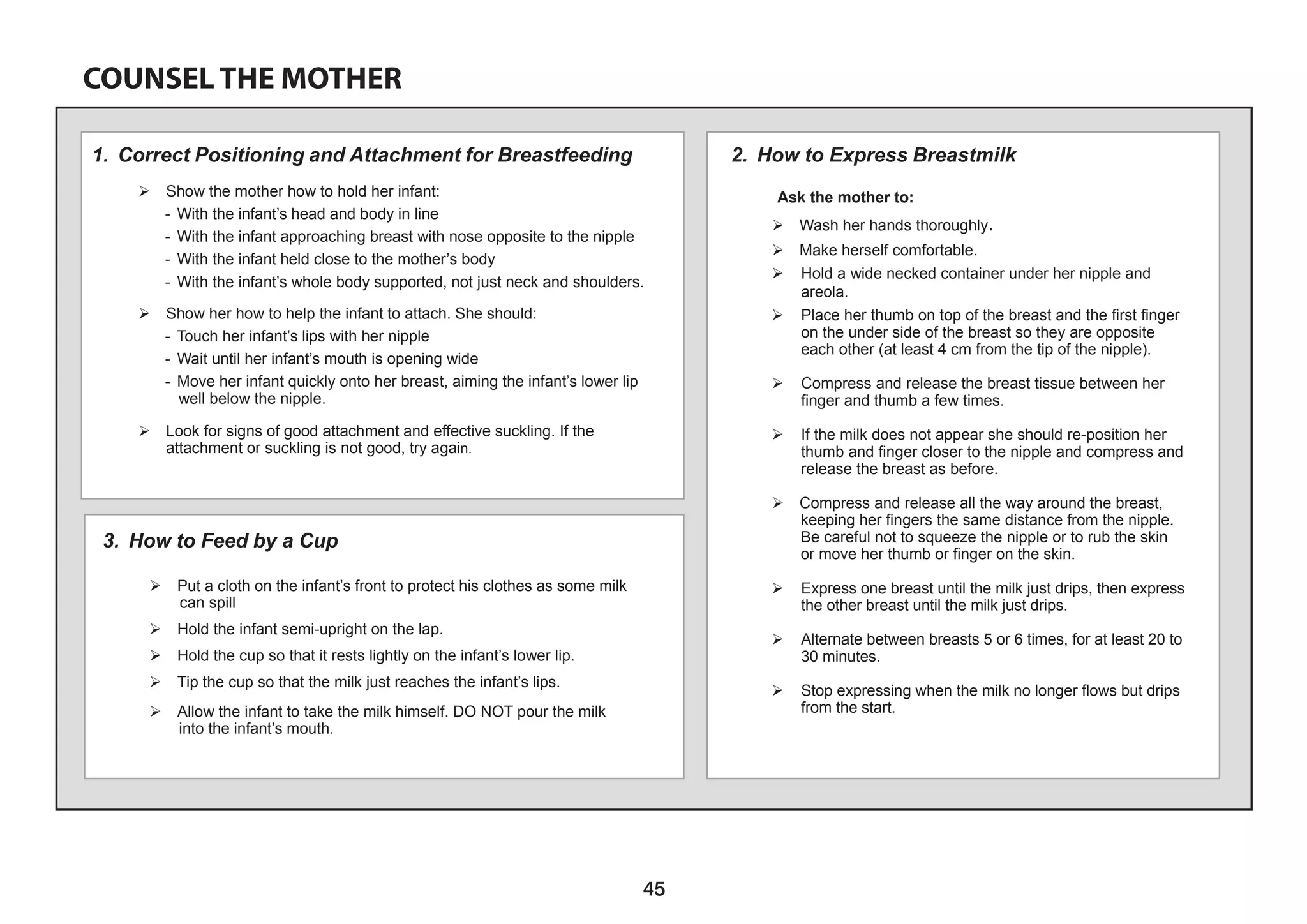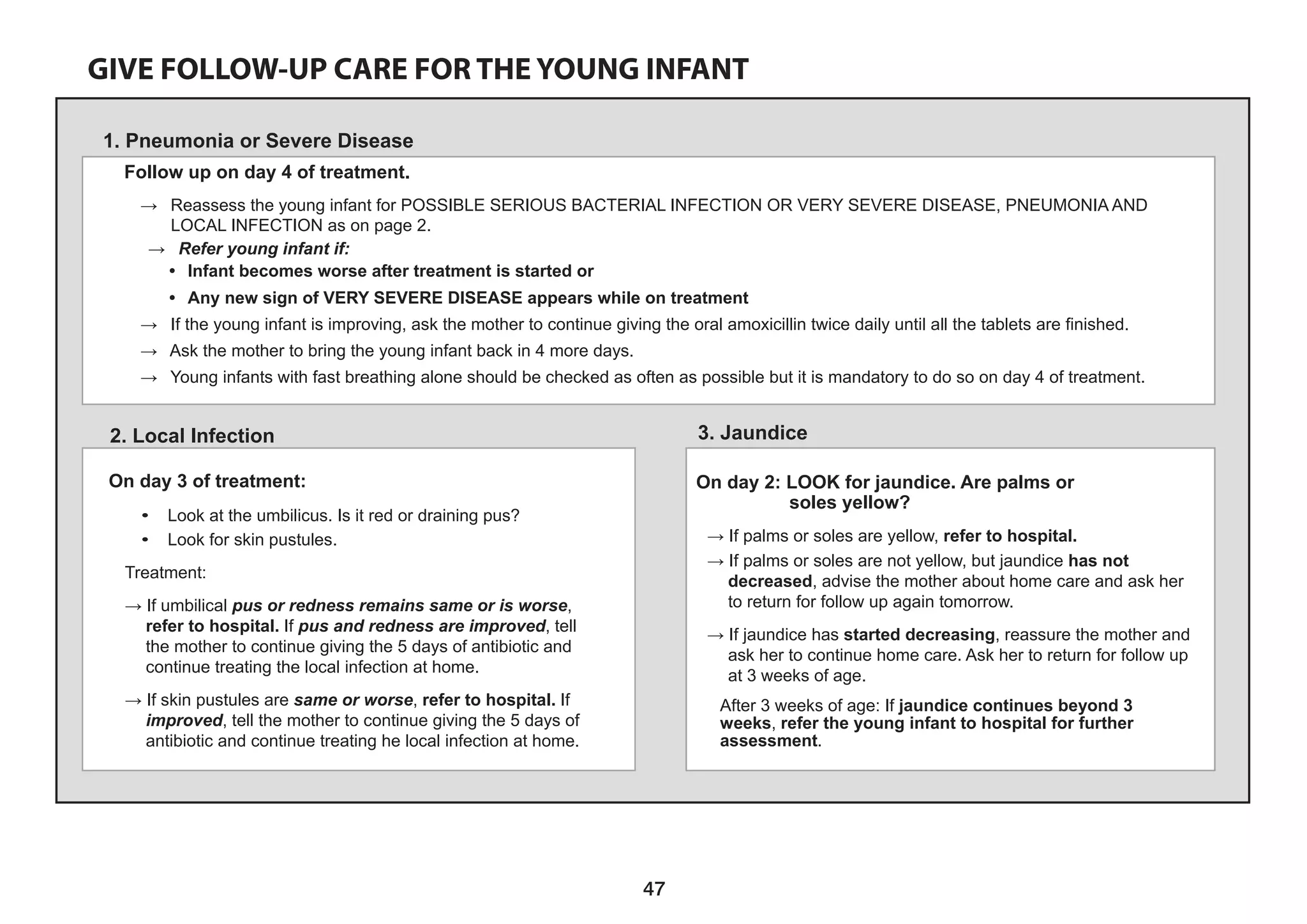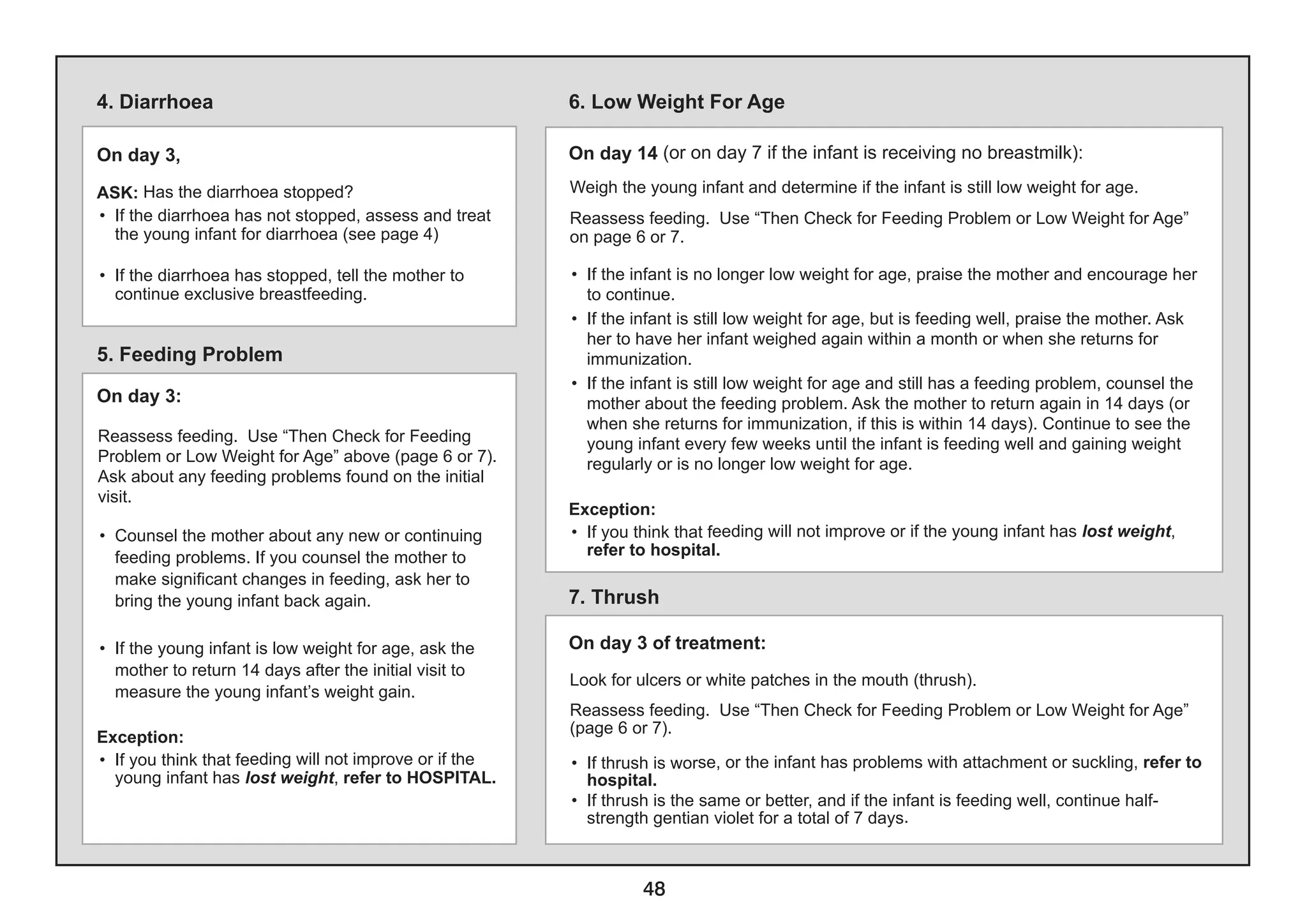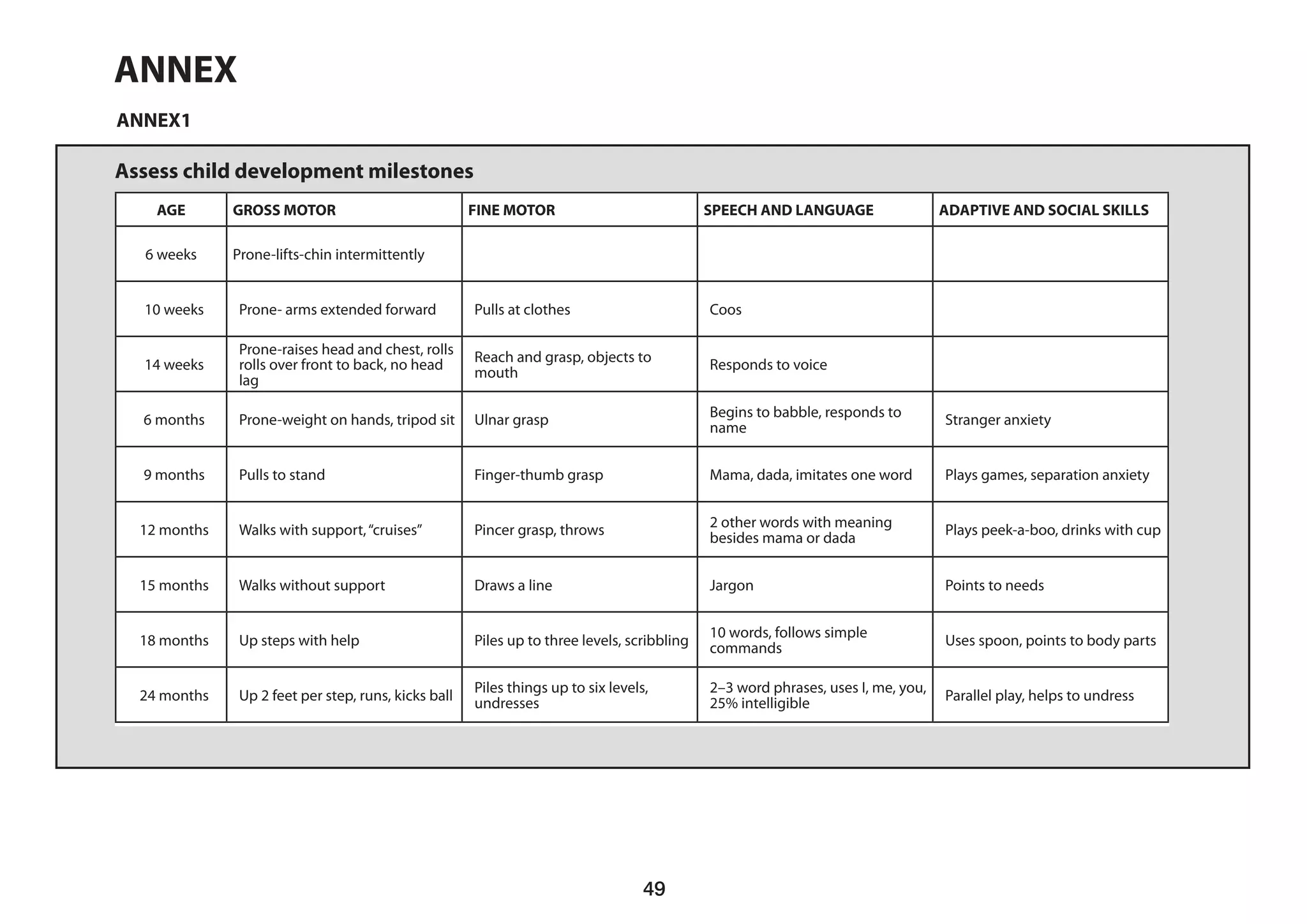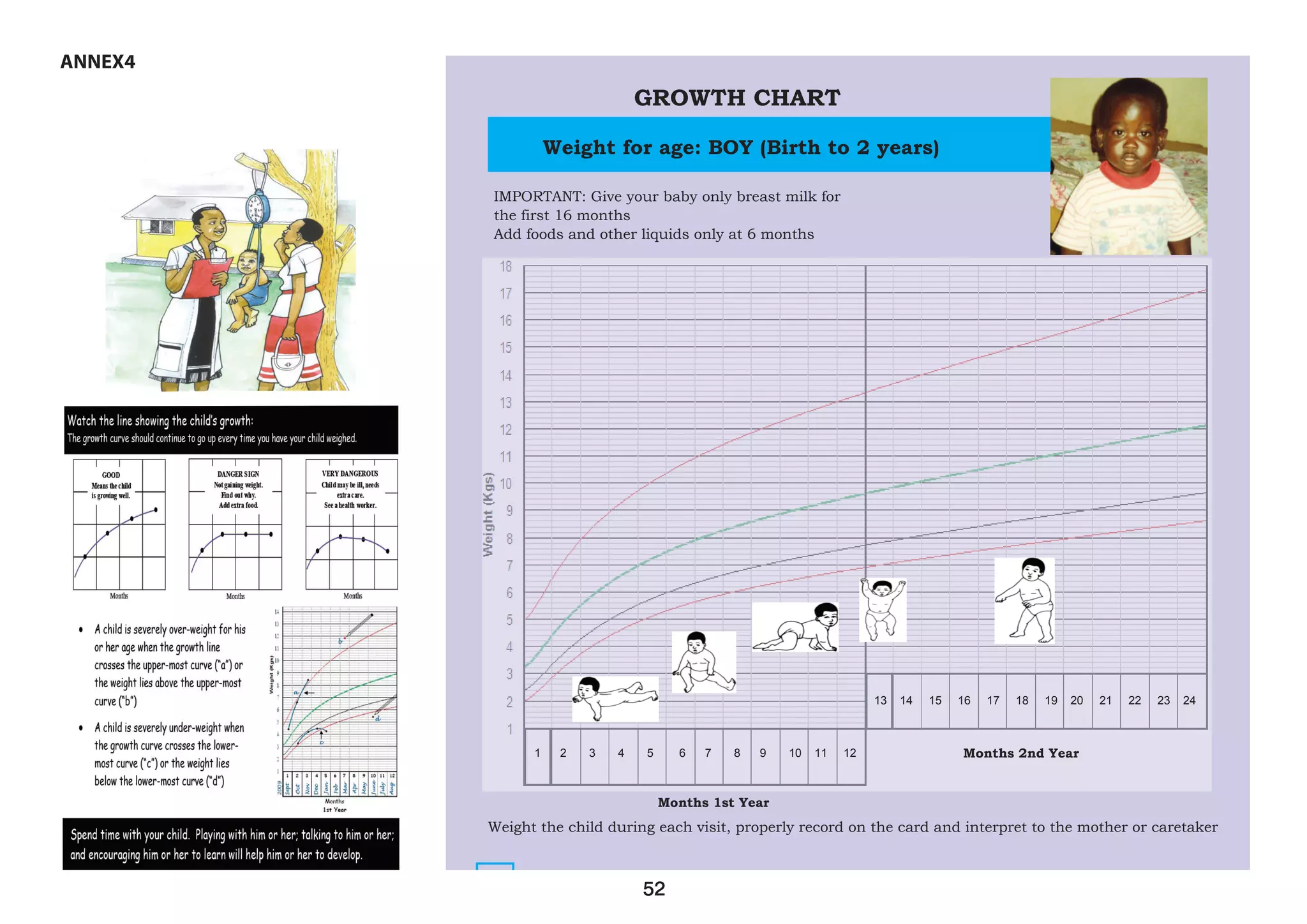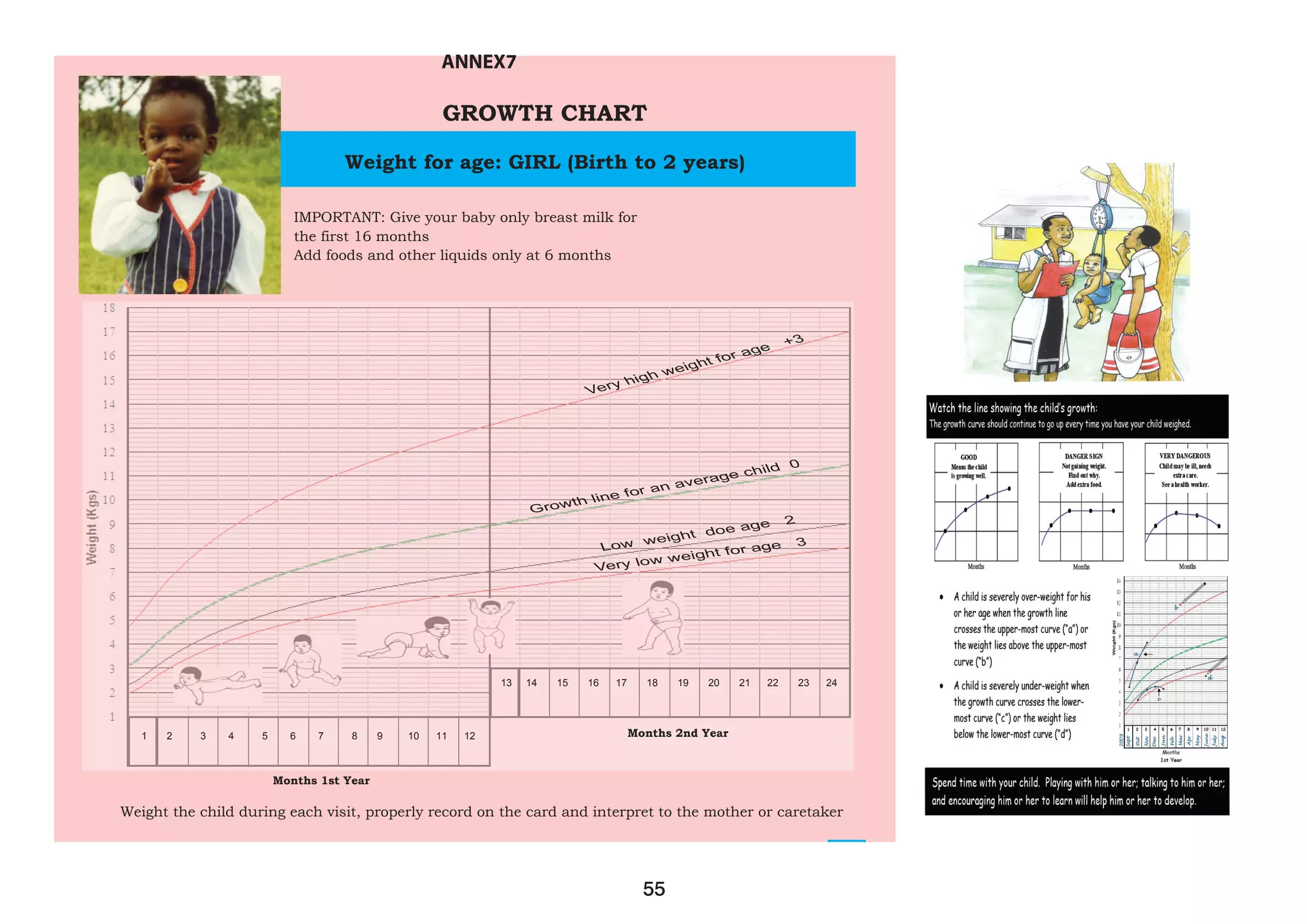This document provides guidelines for healthcare workers on assessing and treating sick children. It includes:
1) Instructions to check for general danger signs, then ask about main symptoms like cough, diarrhea, fever, ear problems, and malnutrition.
2) A chart to classify illnesses like pneumonia, persistent diarrhea, dysentery, and fever based on symptoms. It identifies pre-referral treatments and medications.
3) Sections on treating conditions, counseling mothers, follow-up care, and treating young infants from birth to 2 months.
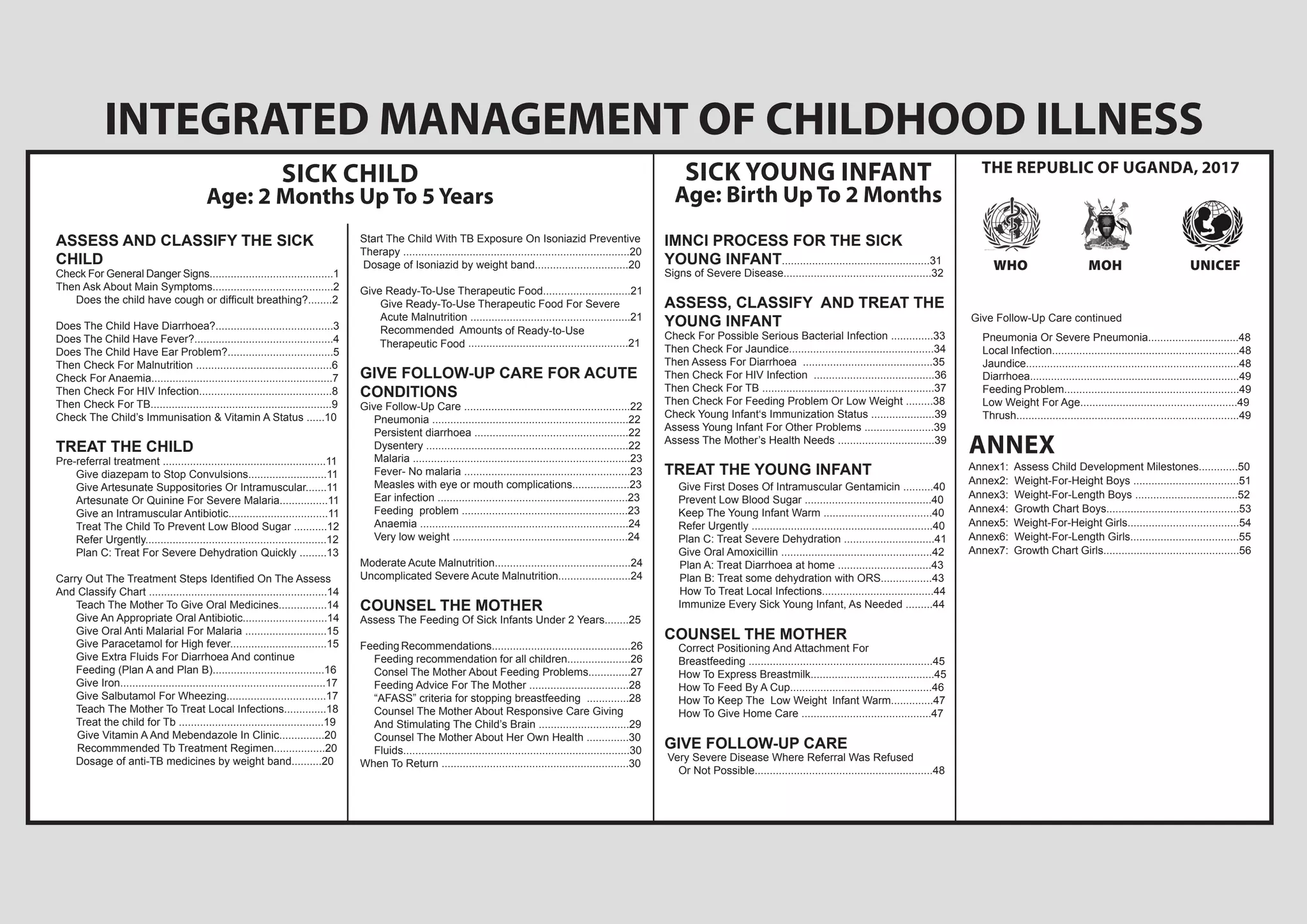
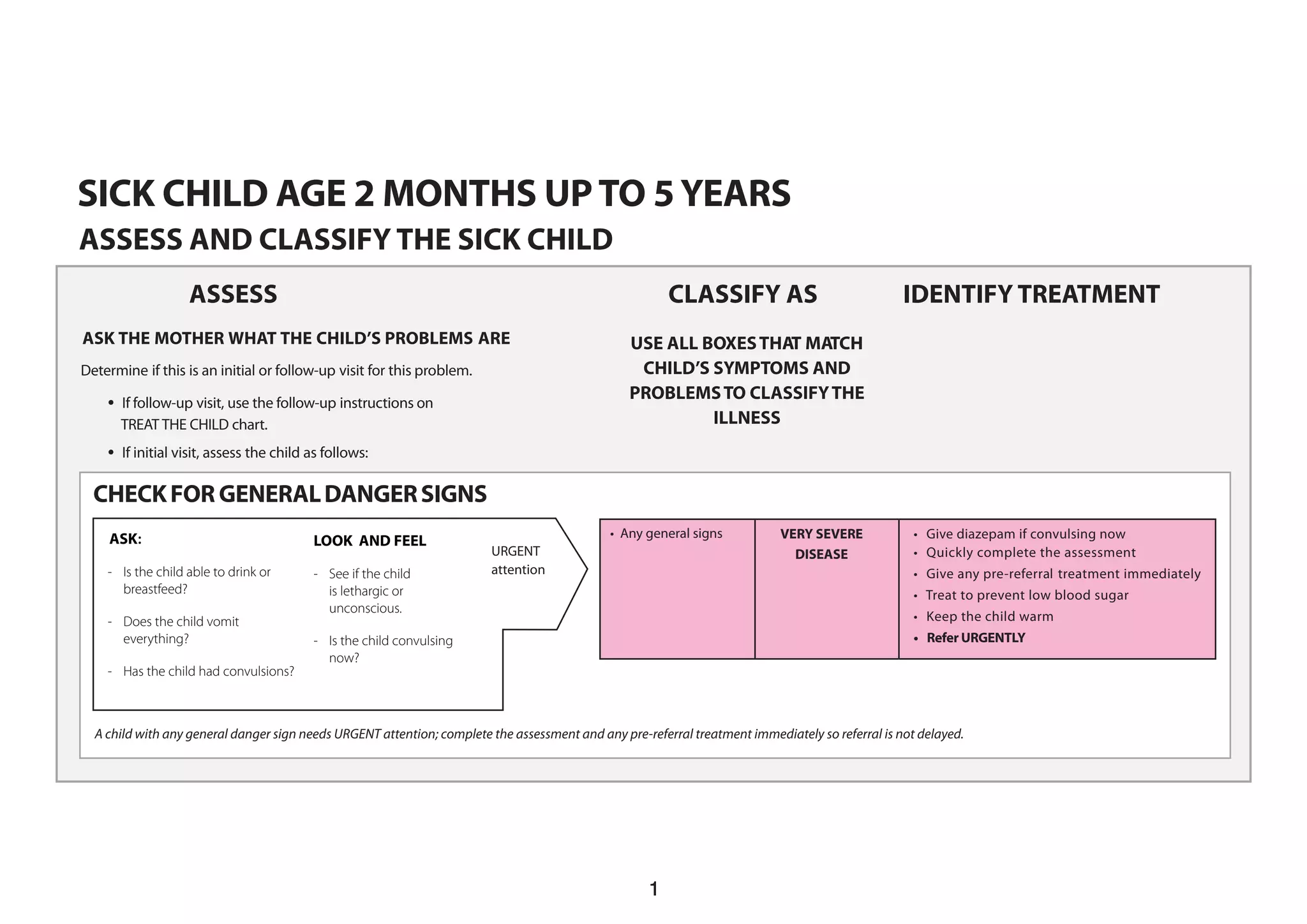

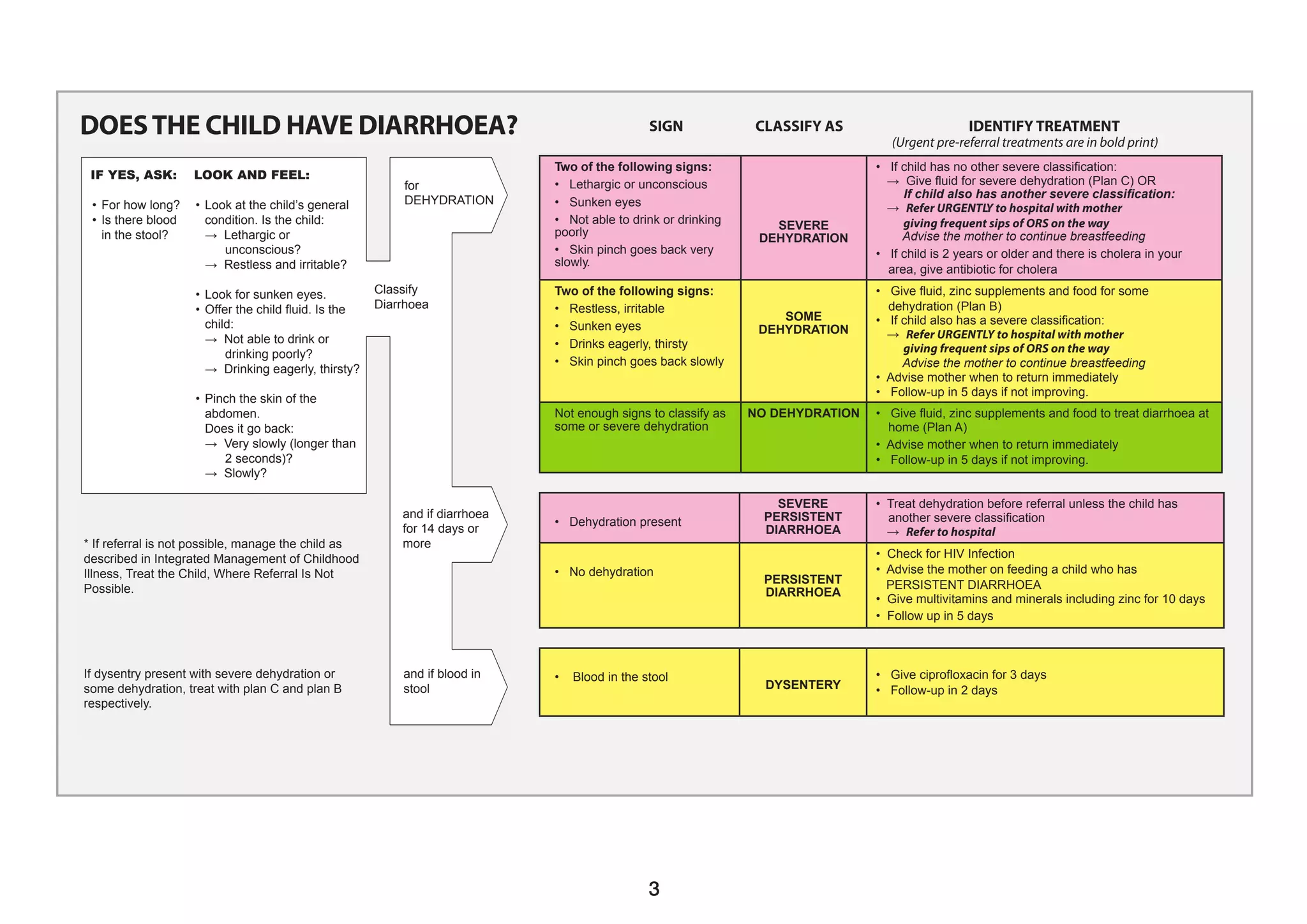
![4
IF YES, ASK:
• For how long?
• If more than 7
days, has fever
been present
every
• Has the child had
measles within
the last 3 months?
Do a Malaria Test IF
NO general danger
sign or severe
classification
(by history or feels hot or temperature 37.5°C** or above)
LOOK AND FEEL:
• Look or feel for stiff neck.
• Look for runny nose.
Look for signs of MEASLES
• Generalized rash and
• One of these: cough, runny
nose, or red eyes.
• Look for mouth ulcers. Are
they deep and extensive?
• Look for pus draining from
the eye.
• Look for clouding of the
cornea.
Classify
FEVER
• Any general danger sign or
• Stiff neck
• Malaria test POSITIVE
• Give first dose of Artesunate or quinine
for severe malaria
• Give first dose of an appropriate antibiotic
• Treat the child to prevent low blood sugar
• Give one dose of paracetamol in clinic for
high fever (38.5°C or above)
• Refer URGENTLY to hospital
• Give Artemether-Lumefantrine(AL)
• Give one dose of paracetamol in clinic for
high fever (38.5°C or above)
• Advise mother when to return immediately
• Follow-up in 2 days if fever persists
• If fever is present every day for more than
7 days, refer for assessment
VERY SEVERE
FEBRILE DISEASE
MALARIA
DOES THE CHILD HAVE FEVER?
If the child has measles now or within the last 3 months.
** These temperatures are based on axillary temperature. Rectal temperature readings are approximately 0.5°C higher.]
*** Other important complications of measles — pneumonia, stridor, diarrhoea, ear infection, and malnutrition - are classified in other tables.
SIGNS CLASSIFY AS TREATMENT
(Urgent pre-referral treatments are in bold print)
• Any general danger sign or
• Clouding of cornea or
• Deep or extensive mouth
ulcers
• Pus draining from the eye or
• Mouth ulcers
• Measles now or within the last
3 months
• Give Vitamin A treatment
• Give first dose of an appropriate antibiotic
• If clouding of the cornea or pus draining
from the eye, apply tetracycline eye
ointment
• Refer URGENTLY to hospital
• Give Vitamin A treatment
• If pus draining from the eye, treat eye
infection with tetracycline eye ointment
• If mouth ulcers, treat with gentian violet
• Follow-up in 3 days.
• Give Vitamin A treatment
SEVERE
COMPLICATED
MEASLES***
MEASLES WITH
EYE OR MOUTH
COMPLICA TIONS***
MEASLES
** These temperatures are based on axillary temperature.
Rectal temperature readings are approximately 0.5°C
higher.
*** Other important complications of measles —
pneumonia, stridor, diarrhoea, ear infection, and
malnutrition - are classified in other tables.
• Any general
danger sign or
• Stiff neck
VERY
SEVERE
FEBRILE
DISEASE
• Give 1st dose of rectal artesunate (10 mg/kg) or IM/IV artesunate
(3 mg/kg if < 20 kg, 2.4 mg/kg if > 20 kg)
• Give 1st dose of appropriate antibiotic
• Treat child to prevent low blood sugar (breastfeed or give
expressed breast milk or breastmilk substitute or sugar water by
cup or NGT)
• Give one dose of paracetamol 10 mg/kg for high fever (38.5°C)
• Refer URGENTLY to hospital
• Malaria test
POSITIVE
MALARIA
• Give Artemether-Lumefantrine/Artemether-Amodiaquine
• Advise mother when to return immediately
• Follow-up in 3 days if fever persists
• If fever is present every day for more than 7 days, refer for
further assessment
• Malaria test
Negative
• Other causes of
fever PRESENT
FEVER
NO
MALARIA
• Give one dose of paracetamol in the clinic for high fever
(38.5 degree C or above)
• Give appropriate antibiotic treatment for an identified bacterial
cause of fever
• Advise mother when to return immediately
• Follow-up in 3 days if fever persists
• If fever is present every day for more than 7 days, refer for
assessment
• Check for TB if fever is present for 14 days or more (see page 9)
• Any general
danger sign or
• Clouding of
cornea or
• Deep extensive
mouth ulcers
SEVERE
COMPLICATED
MEASLES***
• Give Vitamin A treatment
• Give first dose of an appropriate antibiotic
• If clouding of the cornea or pus draining from the eye, apply
tetracycline eye ointment
• Refer URGENTLY to hospital
• Pus draining from
the eye or
• Mouth ulcers
MEASLES
WITH EYE
OR MOUTH
COMPLICA
TIONS ***
• Give Vitamin A treatment
• If pus draining from the eye, treat eye infection with tetracycline eye
ointment
• If mouth ulcers, treat with gentian violet
• Follow-up in 3 days.
• Measles now or
within the last 3
months
MEASLES • Give Vitamin A treatment
IF YES:
Then ask: Look and feel:
• For how long?
• If more than 7 days,
has fever been pres-
ent every day?
• Has the child had
measles within the
last 3 months?
• Look or feel for stiff neck
• Look for runny nose
• Look for any bacterial
cause of fever
• Look for any other
cause of fever
• Generalized rash and
one of these: cough,
runny nose, or red eyes.
Do a malaria test for all children with fever:
If NO severe classification
If the child has measles
now or within the last 3
months
• Look for mouth ulcers
• Are they deep and ex-
tensive?
• Look for pus draining
from the eye
• Look for clouding of the
cornea
Classify
FEVER
Classify
MEASLES
SIGN CLASSIFY AS IDENTIFY TREATMENT
(Urgent pre-referral treatments are in bold print)
DOESTHE CHILD HAVE FEVER?](https://image.slidesharecdn.com/revisedimncichartbooklet-1-230329113539-9c2ce135/75/Revised-IMNCI-CHART-BOOKLET-1-pdf-5-2048.jpg)
